










Gas stoves could face new emissions standards or even be banned because of their link to indoor air pollutants and childhood asthma, according to the U.S. Consumer Product Safety Commission (CPSC).
The federal agency will open public comment on gas cooking stoves and their hazards sometime this winter, Bloomberg News reported.

“This is a hidden hazard,” agency commissioner Richard Trumka Jr.,
said in an interview. “Any option is on the table. Products that can't be made safe can be banned.”
About 12% of childhood asthma cases can be linked to gas stove use, according to a recent study in the International Journal of Environmental Research and Public Health.

“There is about 50 years of health studies showing that gas stoves are bad for our health, and the strongest evidence is on children and children's asthma,” said study co-author Brady Seals, a manager in the car-
bon-free buildings program at RMI, a nonprofit clean energy group. “By having a gas connection, we are polluting the insides of our homes.”
About 40% of Americans have natural gas stoves in their homes.
The stoves emit nitrogen dioxide, carbon monoxide and fine particulate matter at levels deemed unsafe by the U.S. Environmental Protection Agency (EPA) and the World Health Organization (WHO), according to Bloomberg News.
In October, Consumer Reports urged readers to buy electric after tests on gas ranges found high levels of nitrogen oxide gases.
The issue is one likely to generate back and forth as interest groups weigh in on the issue.
Lawmakers have asked for requiring warning labels, range hoods and performance standards. U.S. Sen. Cory Booker of New Jersey and U.S. Rep. Don Beyer of Virginia, both Democrats, were among those who wrote to the CPSC last month urging action and calling the emissions a “cumulative burden” on Black, Hispanic and low-income households, according to Bloomberg News.
Some Republicans have called the plans government overreach.
“If the CPSC really wanted to do something about public health, it would ban cigarettes, or automobiles, long before it moved on to address stoves,” said Mike McKenna, a GOP energy lobbyist. “It's transparently political.”
The Association of Home Appliance Manufacturers, which represents gas range manufacturers, said all cooking produces emissions, not just gas.
“Ventilation is really where
this discussion should be, rather than banning one particular type of technology,” said Jill Notini, a vice president with the Washington, D.C.based trade group. “Banning one type of a cooking appliance is not going to address the concerns about overall indoor air quality. We may need some behavior change, we may need [people] to turn on their hoods when cooking.”
Policymakers in nearly 100 cities and counties have adopted policies that require or encourage a move away from fossil fuel-powered buildings in an effort to address climate change, Bloomberg News reported.
Natural gas distributors have said that bans on this fuel would offer little environmental benefit but would increase costs.
“The U.S. Consumer Product Safety Commission and EPA do not present gas ranges as a significant contributor to adverse air quality or health hazard in their technical or public information literature, guidance, or requirements,” said Karen Harbert, president of the American Gas Association.
The Inflation Reduction Act may provide some relief to consumers who can get rebates of up to $840 to purchase new electric ranges, part of $4.5 billion to help low- and moderate-income households electrify their homes, Bloomberg News reported.
The commission could issue a proposal as soon as this year, Trumka said.
“There is this misconception that if you want to do fine-dining kind of cooking it has to be done on gas,” Trumka said. “It's a carefully manicured myth.”
We offer the perfect combination of comfort and care at Wolk Manor, a part of Rochester’s only Continuing Care Retirement Community.
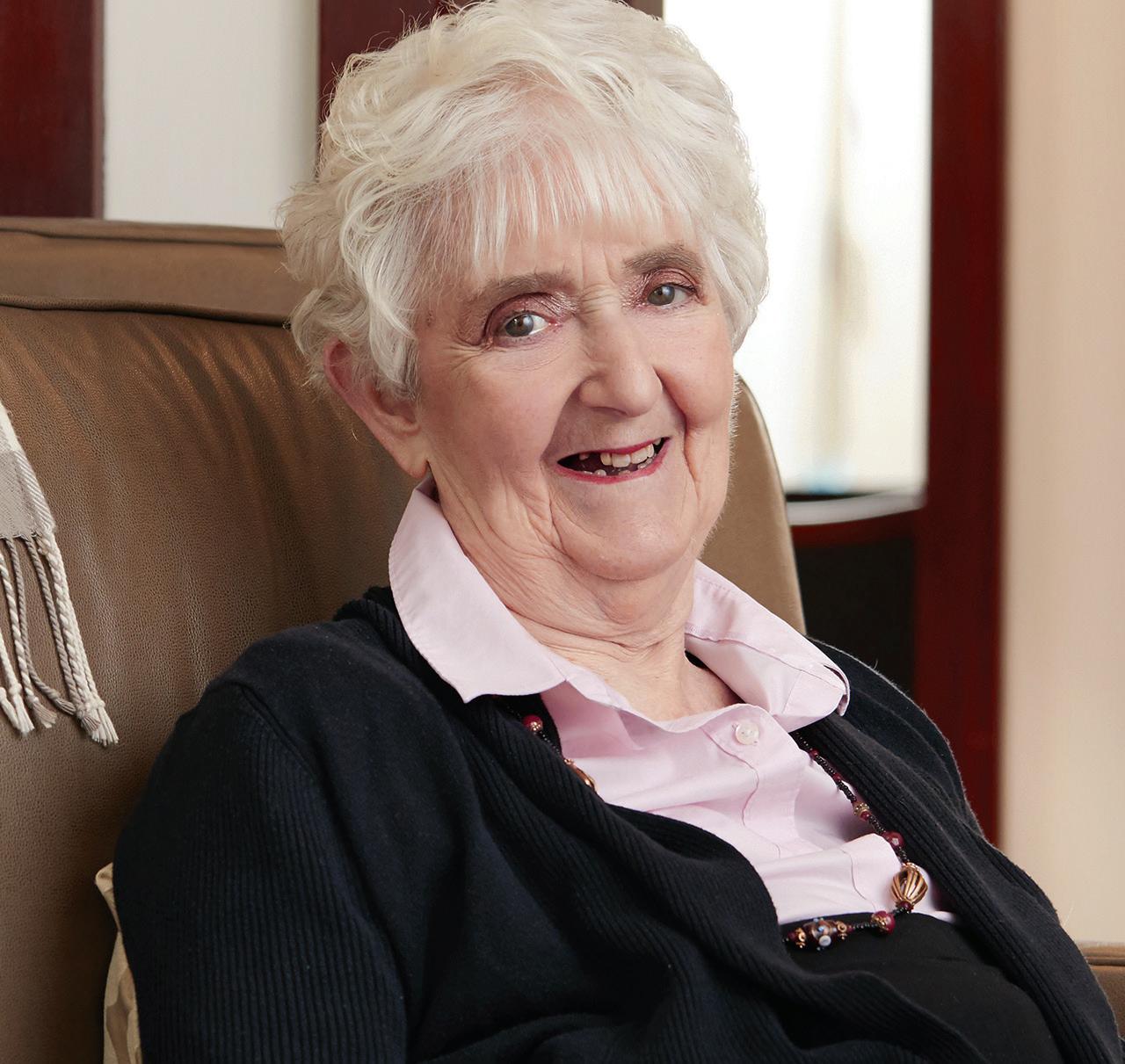
Enjoy comfortable residential surroundings and the assurance of quality services and personal attention.
An affiliate of Jewish Senior Life
Move to a supportive community where housekeeping, fine dining, transportation and social activities abound.
Call (585) 341-2307 or visit WolkManor.org to learn more.
“
New primary care physician shares her experience caring for refugees from Nepal, Afghanistan, Ukraine, Syria, Somalia, Tanzania. ‘It’s been a real joy to work at the Center for Refugee Health,’ she says
Q: We’re interested in hearing about your work at Rochester Regional’s Center for Refugee Health.
A: I finished my residency in internal medicine in June of 2022 and then accepted this job through Rochester Regional. I work at the Center for Refugee Health for part of my time and then I’m over at Unity Fac-
come with working with that population. It’s been a real joy to work there.
Q: When it comes to Rochester’s refugee population, where are they generally arriving from?
A: They’re coming from all over. Because we’ve had patients who
preters that are using a video interpretation service. We also have front desk staff and patient navigators who are from some of the refugee communities that we serve and speak some of the languages that our patients speak if we need on-the-spot interpretation.
Q: Do some patients eventually end up becoming interpreters?
A: We have a number of staff members who were former refugees, but they weren’t always necessarily our patients. They arrived previously. But it is really nice to have people who are well-known within these communities and speak other languages.
Q: How big is the program?
A: We see — it depends on which number you pull — between 4,000 and 5,000 patients. Closer to 5,000 that we see on a regular basis.
Q: How large is the medical staff?
A: We have three attending physicians, and we’re all either family medicine or internal medicine. The family medicine attendings take care of children as well as adults. In addition to that we have two nurse practitioners and a physician’s assistant. We have two on-staff social workers on site as well as two patient navigators who help with making appointments.
: Aside from communication barriers, what other challenges are there in working with a refugee population?
: A lot of it is navigating the health system for people who are completely new to the U.S. health system. Teaching people where to go for an emergency, what constitutes an emergency, when to call the doctor. A lot of issues with communication go beyond what happens in the office, but also how do they call to make an appointment with a specialist if they don’t speak the language or understanding the instructions for their medications. Many of our patients can’t read or write in their first language let alone in English, so we have to figure out how to instruct people to take medications in a way they can understand and then do. So that’s definitely a lot of the big challenges. The other challenge is around mental health access. A lot of our patients, because of what they’ve been through, have issues with depression, anxiety and PTSD and being able to get them connected to psychiatric care is on ongoing challenge. I think that’s true across the United States, certainly in Rochester. Just getting people to be able to see a specialist in a timely fashion is always a challenge.
: How do you get around the medication issue you mentioned
: It means being creative. Usually we can get the pharmacies to color-code different medications and have them correspond to when they should be taken. For example, yellow for morning. Things like that that are different visual cues. And, of course, enlisting family members helps. Many of them have strong family structures and are resettled with their whole family, so they have a bit more family support than other kinds of immigrants who come to this country.
Q: In addition to the psychiatric issues that come with having been in a crisis area, what kinds of health issues do you see in this population that are different than our native one?
A: It really depends on what country they’re coming from. Some come from countries with really robust health systems where people are diagnosed and their chronic illnesses managed in a similar fashion to the United States. Others are coming from countries where they may not have had access to health care. That includes never having been diagnosed with routine things like hypertension or diabetes. So a lot of times it’s the same chronic illnesses, but they’re being diagnosed at a very different stage. And finally there’s infectious disease diagnosis and treatment for diseases that may not be as common in the United States. That’s a big part of the initial evaluation that the government requires for refugees coming into the country.
Q: As far as resources and insurance, what’s available to refugees?
A: The good news is that, because they’re officially accepted and resettled through the government, they do tend to get access pretty quickly. Their first two evaluations are paid for by the government, but the rest is paid for the same as anyone else in the U.S. They generally get enrolled pretty quickly.
Q: What got you interested in refugee care?
A: I’ve always been interested in the social determinants of health and medicine. When I was in medical school I worked with the asylum clinic at Mount Sinai, and that involved doing forensic medical evaluations for people applying for asylum. That got me interested in working with newly arrived migrants. And then throughout medical school and residency, I worked quite a bit with different immigrant populations. My clinic and residency was in Chelsea just north of Boston and it’s known for having an immigrant population. So while not all of them were refugees, it was a similar population.
Q: Are you picking up any new languages?
A: I speak some Spanish, but we don’t have that many Spanish-speaking patients. But I’ve got to start working on my Nepali, my Arabic and my Dari. There’s a lot to learn.
Name: Hazel Lever, M.D.
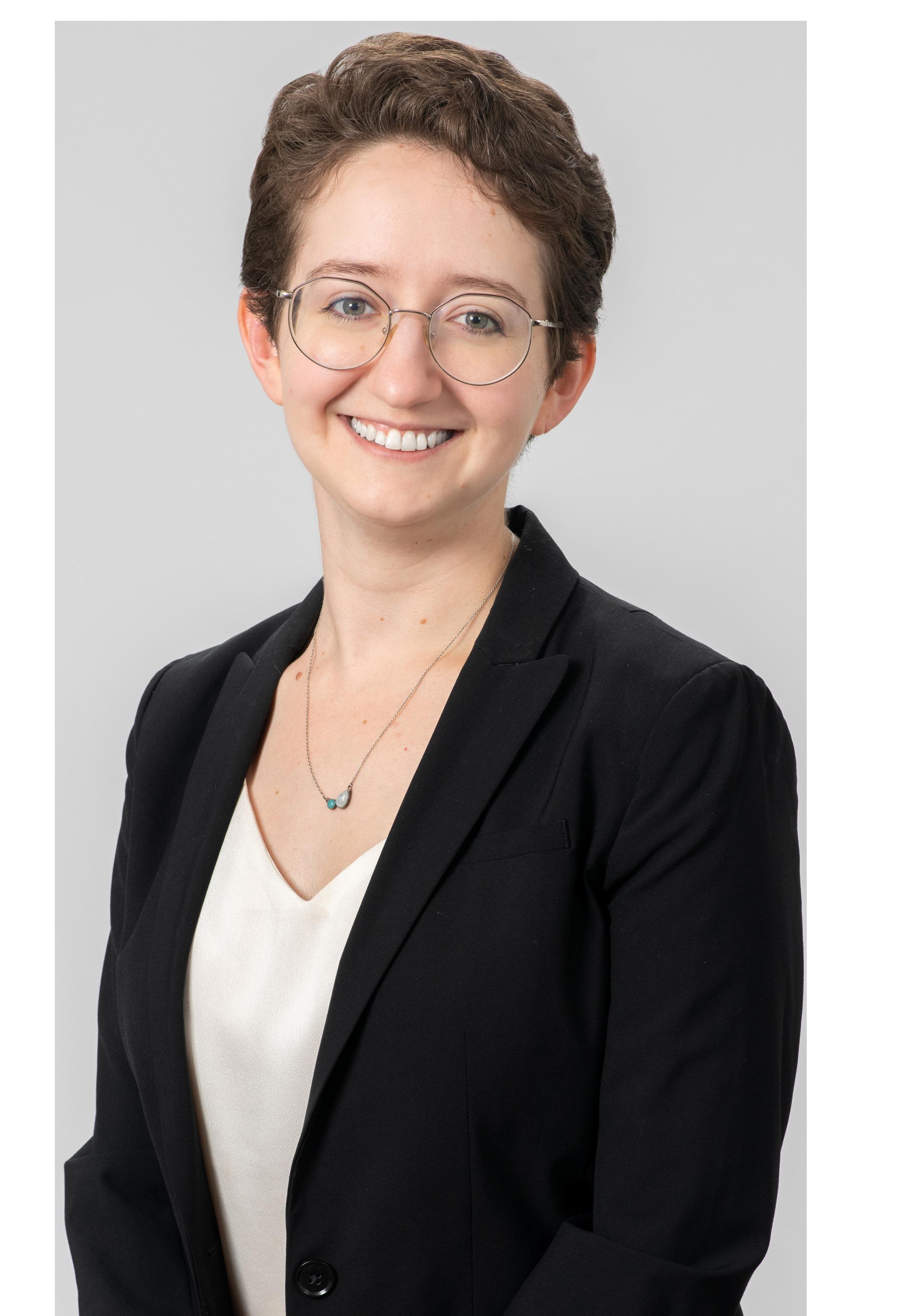
Position: Primary care physician at Rochester Regional Health Center for Refugee Health
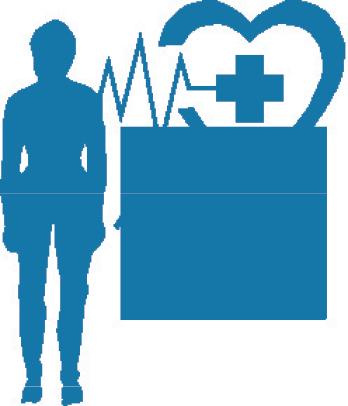
Hometown: Spartanburg, South Carolina
Education: Massachusetts General Hospital, residency (2019-2022); Icahn School of Medicine at Mount Sinai, Doctor of Medicine and Master of Public Health (2015-2019), Harvard University (2009-2013)
Affiliations: Rochester Regional Health Organizations: Society of Refugee Health Providers; American College of Physicians
Family: Partner, dog
Hobbies: Seeing dance and theater, going to museums
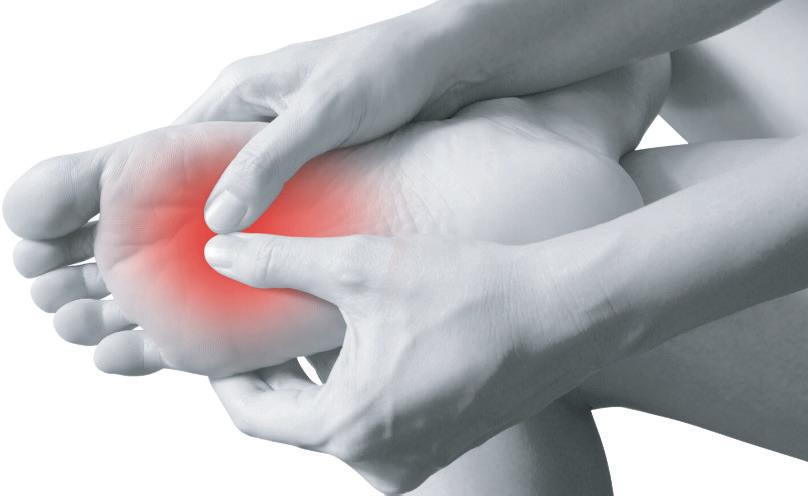 By Andrea Ide
By Andrea Ide
Pain, Tingling, or Numbness in your hands, feet or legs may be due to Nerve Damage. If left untreated this small annoyance can lead to big problems. Unfortunately, most people have no idea what to do abut this problem and some don’t even realize how big of a problem it is. They tell their doctor who gives them drugs and injections which only mask the pain and there is no surgery, other than amputation, that will heal/stop neuropathy from progressing.
Neuropathy is a term used to describe damaged nerves, primarily in the hands and/or feet, that are progressively breaking down due to a lack of blood supply, nutrients and oxygen reaching the nerves along with a lack of communication from the brain. Since the nerves are what the brain uses to communicate with the area and they are breaking down, the brains ability to communicate with the area lessens over tine, allowing for the progression of more breakdown and worse symptoms. It can be caused by Diabetes, Poor Ciculation, Poor Nutrition, Chemotherapy, Agent Orange, Misaligned Spinal Bones Placing Pressure on the Nerves, along with over 100 other causes. “Patients experience extreme sensations, loss of feeling, even No Feelings in their Hands and/or Feet along with muscle spasms, pain, weakness, numbness, tingling, and burning and many have a very hard time with balance” says Dr. Nathan Riddle of Riddle Wellness, a Neuropathy testing and treatment clinic.
This condition can eventually lead to further nerve damage, causing complete loss of legs or arms leading to amputation, death or brain injury due to falls, burns or other injuries that will not heal, along with organ failure in some cases.
Are you or someone you love suffering with loss of balance, numbness or pain from Nerve Damage in your hands and/or feet that just won’t heal? You don’t have to any longer. This local clinic right here in Rochester, NY is helping people find lasting relief without the use of drugs or surgery! That’s BIG EWS!
More than 20 million people in the U.S. Are dealing with some form of Neuropathy. Most commonly noticed first in the hands or feet, causing weakness, numbness, tingling pain and debilitating balance problems, often frustrated with no place to turn to and no hope of recovery. “By the time they come to see us, they feel like they have tried everything. Their MD put them on Anti-Seizure or Epilepsy meds like Gabapentin, Neurotin, Cymbalta or Lyrica and told them they will just have to live with the pain,” said Dr. Riddle.
With recent advancements in nerve regeneration technology and treatment options, clinics all over are seeing larger success rates and faster results with their neuropathy patients.
“This new technology paired with our multifaceted approach, has been life altering for our patients and our clinic,” said Dr. Riddle.
The development and success of these new, highly effective Neuropathy Protocols by Dr. Riddle and his team at Riddle Wellness have been the talk of the town in recent months. “Neuropathy patients have been coming in from all over the state and the results that they are getting is truly amazing,” said the Patient Coordinator at the Clinic. There are some things people can do at home to aide in the healing process of their neuropathy however, healing neuropathy is an all-encompassing process that ill require lifestyle changes, home care and may or may not include chiropractic, (varying from patient to patient) along with guidance from a medical professional that is experienced, skilled and trained to treat neuropathy.
Dr. Riddle and his skilled care
team in Rochester have been treating neuropathy for years now in and judging by their 5 Star patient reviews, and all their patient video testimonials, they have been doing a very good job providing excellent patient care. One person had all but given up, they were crying in their testimonial. They were so thankful and its all because of this amazing new treatment option! They state it has about a 98% effective rate!
and needle sensations, cramps and burning in your feet, or hands, along with the many other bodily symptions this horrible condition plagues people with, take action because it will progress.
Not everyone is able to start care at the clinic but, those who do are thankful! Find out if you are a candidate for their Neuropathy Protocols so they can help you regain the feeling in your hands or feet, stop the pain and start living life again! “Our Neuropathy Protocol is a multifaceted approach to heal neuropathy by nurturing the nervous system, increasing circulation, blood and oxygen, working to rebuild, strengthen and balance the body, all while stimulating the damaged nerves. Revitalizing and healing the damaged areas, enabling them to reactivate and function at an increasingly higher rate over time, all while increasing the patients quality of life dramatically,” said Dr. Riddle.
Claim Your Voucher Now for a Consultation & Examination to determine if you are a good candidate for treatment... Dr. Riddle and his care team are here once again to help readers learn about new options for finding pain relief! Call the clinic today to receive your comprehensive (normally $250).
The clinic utilizes the most advanced Pain Free Testing and a full, easy to understand report of finding with Dr. Riddle going over your op-
tions for care if you are able to move forward.
Call 585-670-0020 and use Code NUMB0021. They have agreed to reduce their usual cost of $250.
But hurry, due to the number of patients the office can see, this is a limited time offer, with only 25 spaces at this exclusively discounted rate. These will be on a first come, first serve basis, messages left will count. My advise, don’t suffer any longer, waiting around for it to get worse... If you or your loved one is experiencing pain, numbness, tingling, pins
Over the years they have treated thousands of patients with chronic conditions of Neuropathy, Sciatic nerve pain, Back & Neck problems, Whiplash Injuries along with Knee Pain. The office is well known and has a good reputation. Patients drive hours to this clinic and the vast majority enjoy superior, lasting relief. In fact, many who have suffered and tried other treatment options with no luck, only to have been told that they are just stuck with their pain and discomfort, have credited the care team at Dr. Riddle office for giving them their lives back!
Call them now at their Rochester, NY location, for a full, thorough Consultation and extensive Neuropathy Consultation at $49. Use Code: NUMB0221 (saving you over $200) to determine if and how Dr. Riddle and his team can help you recover, just as they have helped so many others that suffer with the Pain and Numbness of Nerve Damage.
“I feel like myself again. The pain is gone and I am even sleeping through the night”
~Gill B. Rochester NY

Cancer deaths continue to decline, dropping 33% since 1991 and saving an estimated 3.8 million lives, according to the American Cancer Society's annual statistics report.
But individual trends within that overall success story highlight the struggle to find the best ways to prevent, detect and treat cancer for all Americans, the society said.
On the positive side, the United States saw an “astounding” 65% reduction in cervical cancer rates
among 20- to 24-year-old women between 2012 and 2019, a direct result of human papillomavirus (HPV) vaccination, said physician William Dahut, chief scientific officer at the American Cancer Society (ACS).
“The effort that our children went through over the last 20 years or so to go through vaccinations have actually saved lives,” Dahut said, noting that the plummeting case level “totally follows the time when HPV vaccines were produced.”
Chief executive officer Karen
Knudsen added that “this is some of the first real-world evidence that HPV vaccination is likely to be effective in reducing cancer incidence and [death rates].”
Unfortunately, rates of advanced prostate cancers are on the rise, likely driven by confusion and conflict over screening guidelines, ACS officials said.
The second-leading cause of cancer death for U.S. men, prostate cancer cases rose 3% a year from 2014 through 2019 after two decades of decline, the report found.
There's also been a 5% year-overyear increase in diagnosis of men with advanced prostate cancer, “so we are not catching these cancers early, when we have an opportunity to cure men,” Knudsen said.
Black men, in particular, are being affected by the rise in prostate
cancer, according to the report.
“Black men, unfortunately, have a 70% increase in incidence of prostate cancer compared to white men and a two- to four-fold increase in prostate cancer [death rates] as related to any other ethnic group in the United States,” Knudsen said.
The nation's leading authority on health screening, the U.S. Preventive Services Task Force, recommends that men between 55 and 69 years of age discuss the potential benefits and harms of prostate cancer screening with their doctor and then decide for themselves.
American Cancer Society guidelines recommend that doctors discuss screening with men at an earlier age — 40 for those with a close relative who has had prostate cancer, 45 for men at high risk, and 50 for nearly all others.
According to a study sponsored by the Journal of the AMA, ransomware attacks on healthcare organizations have doubled over the last five years.
Last year, 374 reported attacks impacted the personal health information (PHI) of about 42 million people. The attacks are increasing in both frequency and sophistication. Worse yet, researchers believe these attacks are under reported. The top targets are health clinics, followed by hospitals, ambulatory surgery centers, mental health providers, dental practices and post-acute care providers like nursing homes. Larger, highly networked providers are most vulnerable because employees can access information remotely via cell
A survey recently conducted by American Well (AmWell) revealed 62% of respondents prefer virtual visits, even though it is relatively safe to return to in-person visits. Virtual provider Doctor On Demand reports a 50% increase in business since the fall. The pandemic has exacerbated ongoing economic, environmental and social issues. Notable increases in virtual visits were among men, seniors, millennials and Gen Z. A national BCBS study revealed millennials, versus baby boomers, are more likely to associate the impact of mental health upon physical health. They are twice as likely to develop Type 2 diabetes and almost three times more likely to have coronary heart disease. 92% of millennials feel the pandemic has negatively impacted their mental health. Consequently, alcohol use, smoking and vaping are increasing among that generation. As the millennial and Gen Z generations become more dominant in the overall US population, industry experts predict much more emphasis will be placed on long-neglected behavioral health care.
phones or personal computers, making it easier for hackers.
The healthcare industry was notoriously slow to adopt electronic medical records. Ironically, this made ransomware attacks possible. Healthcare organizations are required to report any breaches to their patients. CommonSpirit Health, the nation’s second largest nonprofit hospital system, faces a class action lawsuit for “failing to exercise reasonable care” to protect PHI. 600,000 records were hacked. Scripps Health will pay out $3.5 million to 1.2 million patients impacted by a breach in 2021. Each plaintiff will receive a minimum $100 with some receiving $7,500 for extraordinary suffering and out-ofpocket expenses.
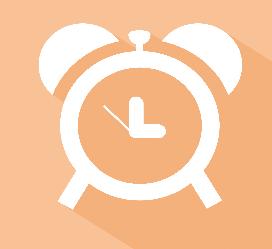
Mifepristone or RU-486 is now available at local pharmacies, retail pharmacies like CVS and Walgreens and via mail order. The drug can be used up to 10 weeks gestation. To protect a patient’s privacy, the DOJ ruled the pill can be delivered via mail. No one must appear in person at a pharmacy to receive the drug. The FDA requires instructions on how to use the pill; information regarding the risks; shipping services must provide tracking; it must be dispensed and delivered in a timely fashion. Pharmacists are one of the most trusted providers, yet they are grossly underutilized. Most people would like to see them provide more services like testing for flu and strep throat and be a more active partner with primary care providers. By providing additional services, pharmacists can relieve a lot of the pressure on physician practices and community clinics.
As of December 15, 2022, enrollment is up 18% on the exchanges
from the same time in 2021, or about 1.8 million enrollees. The healthcare exchanges offer individuals without employer sponsored healthcare various commercial insurance plans. Premiums are based upon the individual’s income.
It contains several key healthcare items. Medicare reimbursement for physicians was to be cut 4.5% this year. Instead, the cut was reduced to 2% in 2023, but then another 3.5% cut in 2024. This cut comes at a time when practices are plagued with nursing shortages and inflation still around 7%-8%. $9.2 billion is earmarked for the CDC which is a $760 million increase from last year. Half of the increase is for future pandemic preparedness. Telehealth flexibility, which was to expire this spring, has been extended another two years. This includes paying providers the same for a virtual visit as an office visit. Medicare will cover marriage and family therapists and counselors and spend more on mobile mental health crisis providers. The spending package also continues enhanced payments to rural hospitals with high Medicare occupancy for two more years.
Per executive order, our 7,000 hospitals (for profit and nonprofit alike) must indicate who owns them and what the nature of that ownership entails. The information will be available on the CDC website. Skeptics wonder what is the point? There are no “secret” hospital owners. All of this is readily available on IRS form 990. In any event, it is another way for Medicare to make healthcare more transparent to the consumer. Skilled nursing facilities have been required to do this for years.
As of this writing, more than 7,000 nurses from Mount Sinai and Montefiore hospitals are on strike for better wages and safer staffing levels. The nursing situation in these
two hospitals is not much different than the nursing situation in most of our 7,000-plus hospitals across the country. The pandemic has wreaked havoc on the nation’s physical and mental health. More than a million people have died. The lingering impact of virus variants continues to swamp emergency rooms which end up treating admitted patients in hallways because inpatient beds upstairs are at capacity. Because of the nursing shortage, hospitals have had to close beds that cannot be safely staffed. So, capacity has been severely hampered. Hospital-based nurses and physicians are literally the front line in a “war” that has lasted three long years. The constant stress has caused a lot of these providers to either quit or retire early, leaving fewer of their colleagues behind to treat the higher patient load. And there seems to be little relief in sight. But increasing wages and adding staff requires, well, money. And cash-strapped hospitals just don’t have it. Hospital reserves are notoriously low. Unlike just about any other business, hospitals (and physicians) cannot solve the money problem by simply raising prices. Virtually no one would end up paying their new price because government and commercial payers set their reimbursement in advance. Based on federal and state budgets, there won’t be enough financial relief this year from either Medicare or Medicaid. And there won’t be much relief coming from commercial insurers because they tend to mimic what Medicare pays. Frustrated and exhausted nurses are on strike against their cash-strapped employers. But hospital administration is not the enemy. At some point, the AHA, ANA and AMA need to band together and “strike” against the payers.
gwc@gwchapmanconsulting.com.
Continuing a decades-long trend, the percentage of American women who've ever had a child declined again in the latest figures from the U.S. Centers for Disease Control and Prevention.
"A lower percentage of women aged 15 to 44 in 2015–2019 had ever had a biological child (52.1%) compared with women aged 15 to 44 in 2011–2015 (54.9%)," concluded a report issued Jan. 10 by the CDC's National Center for Health Statistics (NCHS).

Declines were also seen for men becoming fathers. From 2015 through 2019, 39.7% of boys and men aged 15 to 44 had fathered a child, compared to 43.8% during 2011–2015, the report said.
Overall, birth rates have plummeted for Americans over the past five decades: "Between 1976 and 2018, the mean number of children ever born per woman declined, from three children to two," according to the report's authors, Gladys Martinez and Kimberly Daniels.
By 2019, the average female aged 15 to 49 had given birth to 1.3 children, and the average male had fathered 0.9 kids.
American women are also tending to have a first child later in their lives, the new study found.
The average age for giving birth to a first child was about 24 years for women and 27 for men in 2019, according to the report, which was based on a national survey of almost 21,500 Americans aged 15 to 49. The probability that a woman would have her first child by age 40 fell from 83% in 2011–2015 to 81% by 2019. A similar dip was seen for men becoming fathers by age 40: from
78% in 2011–2015 to 72% by 2019.
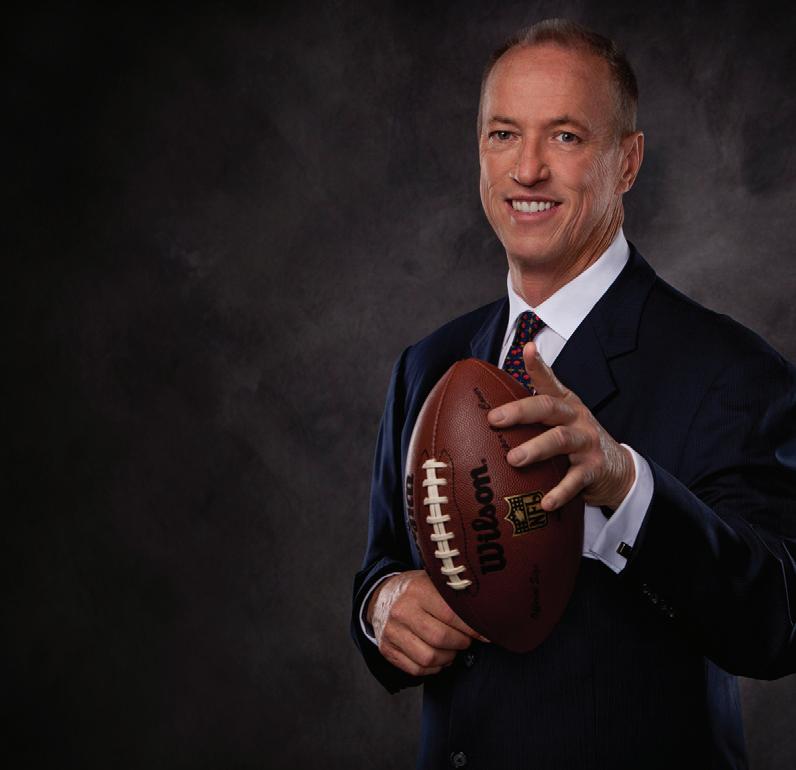

In fact, "delayed childbearing, having a first child at age 35 or over, [has] increased ninefold between 1972 and 2012," the authors noted. Overall, birth rates among women in their 40s have charted steady increases since 1985.
According to the report, the reasons for these trends are many: Better access to contraception, more women seeking higher education, more women entering and staying in the workforce, changing family values, relationship instability, and concerns over personal finances and the high cost of childrearing.

"Having a first child at older ages has been associated with a positive impact on women's wages and career paths," according to Martinez and Daniels.
Later childbirth can be healthy for children, as well, they noted, because having a child in your 30s and 40s typically means a family has better financial resources.
A woman's education appears to influence the timing of her having a first child. The report found that as the years a woman spent in school rose, her likelihood of having a first child in her teens or 20s declined.
Of course, fertility declines with advancing age, so the trend towards later births does have that "potential negative consequence," the authors added.
There's also been a continued trend toward Americans having children outside of marriage, the report found.
The National Health Statistics Report was published Jan. 10 as an NCHS Data Brief.
A monthly newspaper published by Local News, Inc. Distribution: 33,500 copies throughout more than 1,500 high-traffic locations.
In Good Health is published 12 times a year by Local News, Inc. © 2023 by Local News, Inc. All rights reserved. P.O. Box 525, Victor NY 14564. Phone: 585-421-8109 • Email: Editor@GVhealthnews.com
Editor & Publisher: Wagner Dotto Writers: Deborah J. Sergeant, Chris Motola, George Chapman, Gwenn Voelcker, Anne Palumbo, Ernst Lamothe Jr., Mike Costanza, Rebecca Conklin, Jim Miller, Eva Briggs, George Kornfeld
Advertising: Anne Westcott (585-421-8109) • Linda Covington (585-750-7051)

Layout & Design: Angel Campos - Toro • Office Secretary Loni Zardus No material may be reproduced in whole or in part from this publication without the express written permission of the publisher. The information in this publication is intended to complement—not to take the place of—the recommendations of your health provider. Consult your physician before making major changes in your lifestyle or health care regimen.
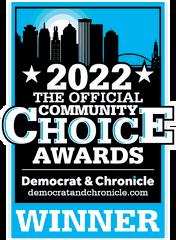
Females ranked higher than males regarding times they feel stressed, according to a recent Gallup World Poll.
The results aren’t surprising considering the numerous effects of the pandemic that unduly burden women such as changes in their children’s education, supply chain problems, health concerns, all areas in which women typically perform more work than men.
Too much stress is not good for anyone.
In addition to the negative emotional aspects of too much stress, it also contributes to numerous disease processes.
Getting rid of stress would not be possible—or desirable, as even positive circumstances produce a certain amount of stress, such as going on vacation, receiving a promotion or adding a new baby to the family. But, whether positive or negative sourced stress, mitigating its effects is important.
“Generally, exercise is so key to stress management,” said Kali Spoto, owner and physical therapist at Star Physical Therapy in Fairport. “Moving your body affects the way that you feel. There are a lot of components to it. Dedicate time to focusing on yourself and your body instead of the stressors of the day. The endorphins you get and the energy release. You can put your stress into movement. It is just a good outlet.”
She added that many chronic
pain conditions and orthopedic injuries improve with lower stress levels.
Outdoor activities such as winter sports or walking can reduce stress levels and help women get in nature, which is also a mood booster.
Austyn Affronti, president of Affronti Fitness in Rochester, encourages clients to find a physical activity they enjoy or to pair exercise with something they already like, such as working out while watching a favorite TV show.
“You may not feel the benefits the first week or two weeks, but after an extended period of time, you start to heal yourself and feel the benefits of this,” he said.
In addition to releasing endorphins, exercise often helps get the mind off of stressful thoughts. Tuning into news and social media too much can contribute to an unhealthy thought life and additional stress.
Josephine DiPisa, intuitive energy coach, Reiki master practicing in Rochester, calls negative news and social media “the noise of the back-
ground of your life” and tells clients to start out their day on a relaxing note with meditation or listening to something motivational.
“You just have to find the method that works for you,” DiPisa said. “Some people like to sit quietly. For others, that’s not the best approach. Others need a guided meditation. Doing the dishes, you can get into a meditative state. Turn off the news and allow yourself to be with your thoughts. Learn how to be present with yourself and to listen to yourself. Listen to what you have going on in the background, in your head. Allow yourself to look at it and then make a change.”
Eating a healthful, balanced diet comprised of whole foods and laying off the alcohol and processed foods can help reduce stress on the body and support good health. Sometimes stress can manifest in an unhealthful diet, such as emotional eating.
Changing the mindset about stress can shift the thoughts from turbulent to tranquil. For example, instead of stressing about what to fix for dinner, feeling thankful about having food to eat deflates the stress. Or, instead of stressing about paying bills, feeling grateful for friends and family who would help if needed.
Viewing the blessing and finding the gratitude in stressful situations “really does create ‘magical’ shifts when you consistently do it and let go of the stress,” DiPisa said. “It’s as if you’re handing things over to God or the universe.”
Oftentimes, stress results from taking on too many responsibilities. Instead of insisting on doing it all, delegating can help change a to-do list to an “all done” list.
Asking for help can also relate to asking for mental health help, whether the listening ear of a wise, caring friend or a professional, who can
Josephine DiPisa, intuitive energy coach, Reiki master practicing in Rochester, calls negative news and social media “the noise of the background of your life” and tells clients to start out their day on a relaxing note with meditation or listening to something motivational.

help navigate through the reasons behind why some circumstances seem inordinately stressful.
“There is no shame in asking for outside help from a resource like a therapist or coach who can help you navigate,” DiPisa said.
“Start to identify how you’re feeling after you’re eating these things so you can say ‘I want different for myself today,’” DiPisa said. “Take ownership of what you have going on in you and why. Why are you drawn to certain things?”
Taking time for physical self-care, including medical screenings and dental cleanings, is also an aspect of stress management. Performing an indulgent skincare routine, taking a long bath, reading relaxing material or engaging in a hobby can all help relieve stress.
into icy cold water in the dead of winter might seem like a crazy idea, but the so-called polar bear plunge has become a popular activity, often paired with raising money for charity.
Boosting its allure is another anything-but-hot trend, the practice of cold therapy, based on the belief that exposing the body to cold water and air may strengthen the immune system and improve cardiovascular health.
Actor Chris Hemsworth of “Thor” fame helped promote the idea when he took an Arctic swim without a wetsuit as part of National Geographic’s “Limitless” television series.
But evidence supporting the health benefits of cold therapy remains scant. Experts caution that for some people, shocking the body with cold water could do more harm than good, even at less-than-frigid temperatures. The National Center for
Cold Water Safety warns that sudden immersion in water under 60 degrees Fahrenheit can kill a person in less than a minute.
“That cold shock can be dangerous,” said physician Jorge Plutzky, director of preventive cardiology at Brigham and Women’s Hospital in Boston. “Whether there are health benefits or not is not clear and has not been established.”
Plunging the body into cold water triggers a sudden, rapid increase in breathing, heart rate and blood pressure known as the cold shock response. That can cause a person to drown within seconds if they involuntarily gasp while their head is submerged. The shock also places stress on the heart and makes it work harder.
Within minutes, the loss of heat begins causing other problems.
Blood rushes away from the extremities to the body’s core to protect vital organs, Plutzky said. That
leaves the arms and legs without good circulation, which can lead to a loss of strength and coordination. The rapid loss of heat also can lead to hypothermia, making it harder to think clearly or move well. Being immersed in cold water triggers hypothermia faster than just being out in the cold, because water takes heat away from the body 25 times faster than air.
Some studies suggest that people who adapt to cold water immersion through routine ice bathing or win-

ter swimming may reduce inflammation and other cardiovascular risks. But others have found evidence of higher levels of troponin in people who compete in winter swims, suggesting that prolonged cold water immersion could lead to heart muscle damage.
“I would caution against it for anyone with a cardiac history,” said Plutzky, who noted that little research on the health effects of cold water immersion included people with heart conditions.
So-called polar bear plunge has become a popular activity but doctors raises concerns about practice
Outdoor activities such as winter sports or walking can reduce stress levels — but there are other ways to de-stress
Easing the burdens of mental illness
Compeer Rochester has helped those suffering from mental illness to cope with their conditions and remain a part of the community since the nonprofit was founded in Rochester in 1977.
The nonprofit’s volunteers bond with those they serve, who are called “participants,” and join them in recreational activities and simple daily tasks. Volunteers spend four hours each month with participants, with whom they might visit museums, bowl, play board games or do other recreational activities, or join in such simple tasks as shopping for groceries.
Over the years, Compeer Rochester has grown into Compeer, Inc., an international nonprofit with 40 affiliates, including those in Canada, Australia and England—the London affiliate opened in the midst of the COVID-19 pandemic. The local affiliate has 25 employees, more than 200 volunteers and a budget of $1.6 million and serves about 500 participants each year.
In Good Health spoke to Sara Passamonte, Compeer Rochester’s president and executive director, about her organization and its challenges.
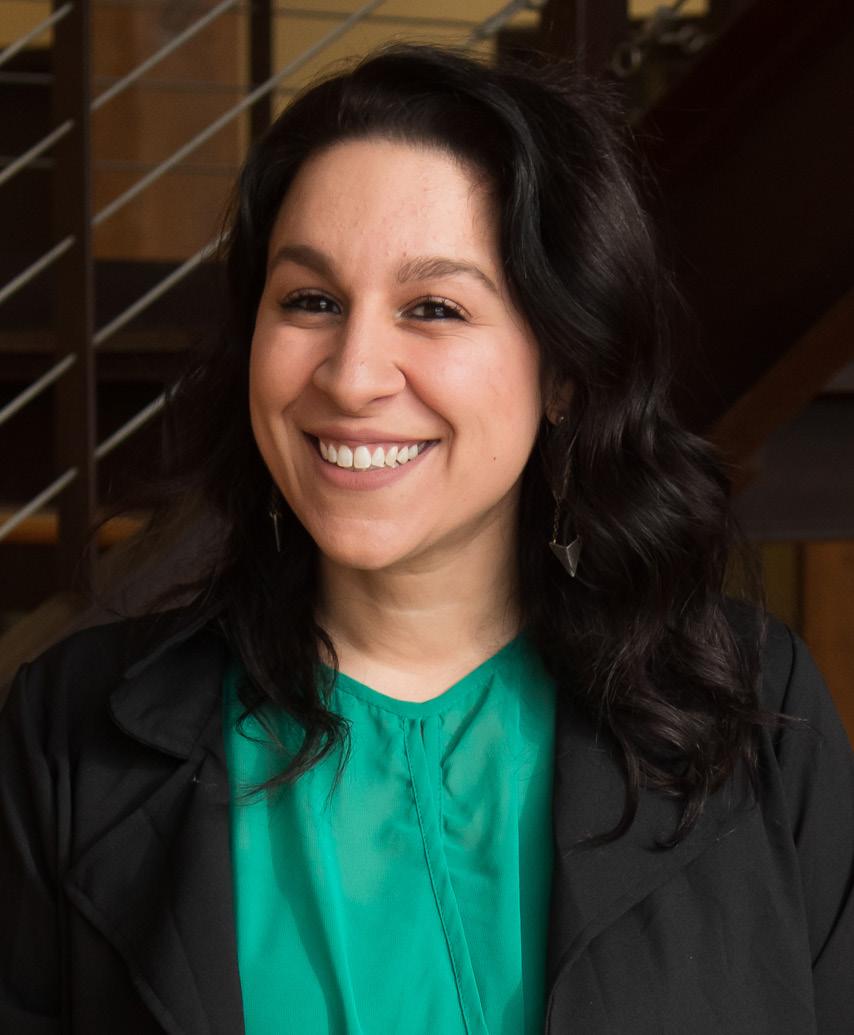
Q. Who does Compeer Rochester serve?
A. Compeer serves individuals and families with mental health challenges. We can work with anybody who is experiencing isolation and loneliness associated with a mental health condition where they would benefit from having a relationship with somebody outside of clinical therapy. It really works as more of an accompaniment to more traditional mental health treatment.
Q. Can you describe some of the mental health challenges your participants are dealing with?
A. We use the term “mental health” pretty broadly. When we talk about “mental health,” we talk about things like depression, anxiety, bipolar disorder, even just exposure to trauma.
Q. Does someone have to have a mental health diagnosis to join Compeer Rochester as a participant?
A. A lot of people that come to Compeer might be in the process of getting a diagnosis. There has to be a mental health need, not necessarily a mental health diagnosis, but one of the eligibility requirements for Compeer Rochester is that there is an existing provider who can make the referral to Compeer.

Q. What kinds of activities might a Compeer volunteer do with an adult participant?
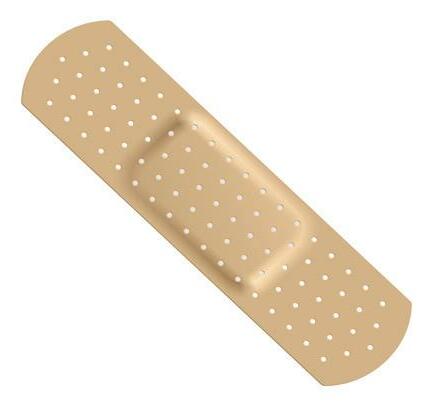
A. It's really getting them using resources that they can then access maybe when they’re not with their Compeer friend. We have great resources in Rochester, not just health resources, but recreational resources. As a longtime Compeer volunteer, I spend time with my adult participant. Sometimes we just play board games. We used to go to the Y once in a while. It can be as simple as going for a walk down the street, maybe hitting up a coffee shop. It’s truly about community integration.
Q. Compeer’s youth, teen, and young adult program serves those 5 to 21 years old. What kinds of activities might volunteers do with those participants?
A. It’s mentoring through recreation. We have partnerships with the local museums bowling allies, special event or sporting event [venues]. We’ll get tickets for people to go. The children I’ve personally mentored in the program, for the first several years we were matched, we would use the YMCA as kind of our home base, maybe go in the pool, do a little bit of integration in the day care
room to hang out with some other kids. As they got older it was mall visits and movie theaters and birthday parties and things like that.
Q. What is the CompeerCORPS Program?
A. CompeerCORPS is a group activities and adaptive sports program for veterans. The program is staffed by veterans and attended by veterans, and sometimes their families. These could be veterans with service-connected physical injuries, or mental health challenges as a result of their service. We do adaptive rowing, adaptive climbing at a rock-climbing gym. They have a golf league. There’s fishing charters in the summer and fly fishing. They do painting classes. Something is going on every week no matter what temperature it is outside. Part of Compeer CORPS is Vets Driving Vets. It is both a medical and non-medical transportation service.
Q. How does Compeer Rochester train its volunteers?
A. We do a custom training prior to a volunteer meeting their match. It’s done by staff. Our training is about two and a half hours long. We cover boundary setting, communication, expectations, building a relationship. We also train on some mental basic health topics. It’s done typically one-to-one. We’ll work around your schedule.
Q. How does Compeer Rochester select its volunteers?
A. We look for individuals who have any level of experience with mental health and can give at least four hours a month of free time to somebody else.

Q. How do you match volunteers and participants?
A. We match volunteers and participants based upon geographical location, common interests, age and gender preferences, and level of need and experience. We’re looking to match a volunteer with a participant, a participant with a volunteer. In the adult program, the volunteer-participant relationship looks like a friendship, even if there’s an age gap. In the youth program, it’s a mentoring relationship.
Q. What challenges does Compeer Rochester face at this time?
A. I’ve been with the organization for 17 years. For 17 years, volunteer recruitment has been very challenging.
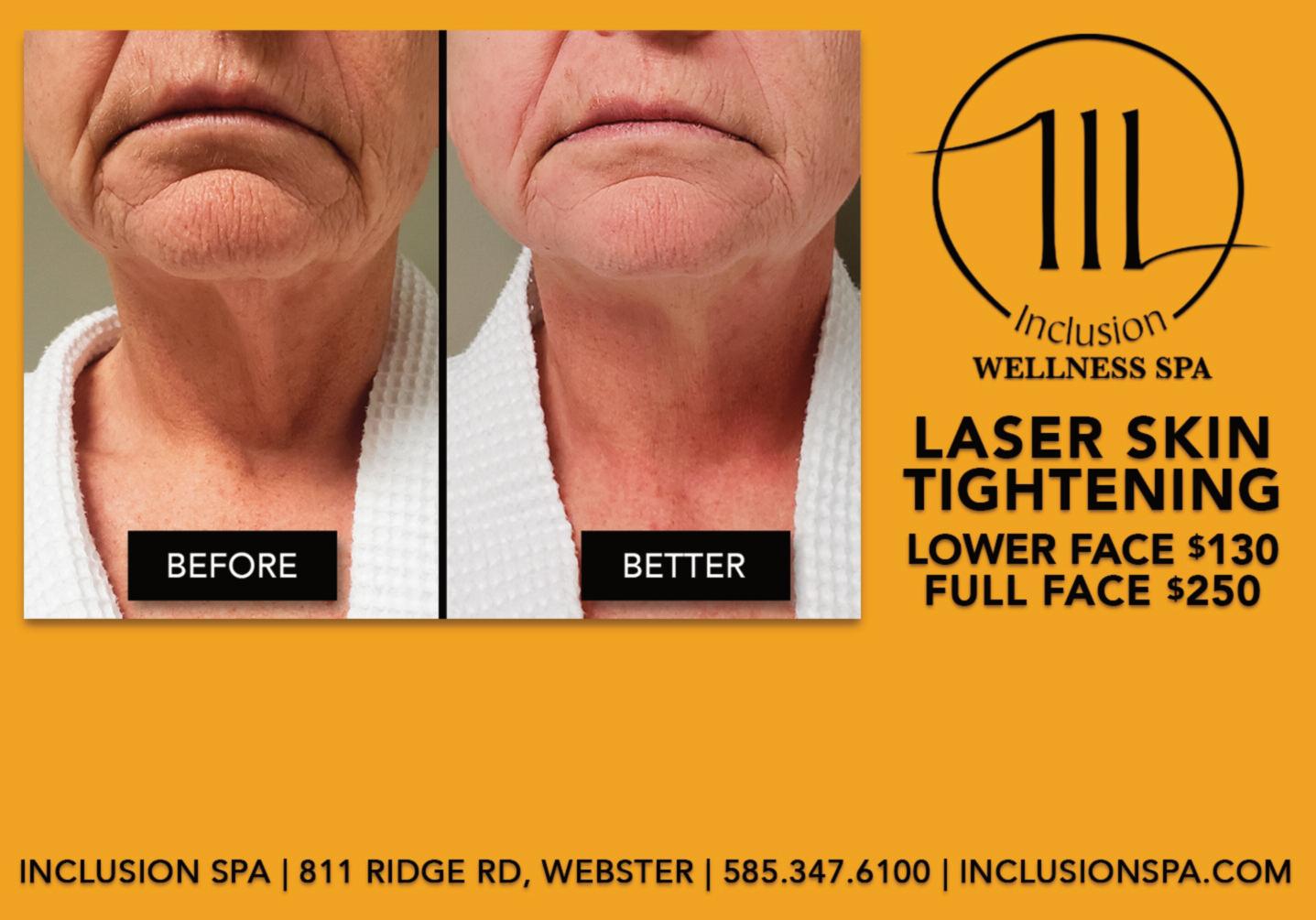
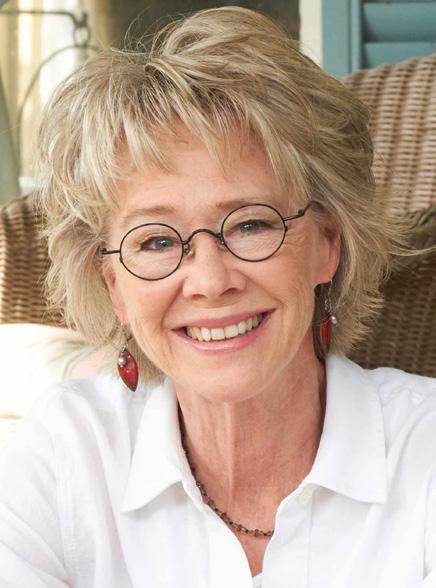
What’s a single person to do on Valentine’s Day?
Embrace it!
February (and that perennial “day of love”) is just around the corner, so why not beat Cupid to the punch?
Grab your proverbial bow and arrow, take aim and decide to warmly embrace Valentine’s Day with grace, confidence and humor.
Since the ball dropped on 2023, we haven’t been able to walk into a store, open a magazine or even shop online without being bombarded by candy hearts, roses, pink teddy bears and cards galore.
Yes, the countdown to Valentine's Day started even before we set down our glass of Veuve Clicquot. In full force, it's no wonder that those without a "special someone" on their arm may dread what Hallmark promises to be the most romantic day of the year.
What's a single person to do? Before drowning your sorrows in a box of Godiva chocolates, consider
these tips for surviving the day dedicated to amour:
Take the broadest possible view of Valentine’s Day and decide it’s not just a day for couples, but a day to celebrate love in all its glorious manifestations: love of self, love of family, love of friends and — one of my favorites — love of pets!
Believe me, you won’t be the first to purchase an adorable, heart-festooned collar for your furry friend. Guilty!
Send cards with thoughtful mes-
Vaccinations among kindergarteners declined for the second year in a row, leaving hundreds of thousands of young children vulnerable to dangerous infectious diseases, U.S. health officials reported in January.
About 93% of kindergarteners had their required vaccinations during the 2021-2022 school year, including the measles-mumps-rubella (MMR), diphtheria-tetanus-pertussis, polio and chickenpox vaccines, according to a new study published Jan. 13 in the Morbidity and Mortality Weekly Report (MMWR), a publication of the U.S. Centers for Disease Control and Prevention.
That's down from 94% nationwide during the 2020-2021 school year and 95% for the 2019-2020 school year, the report found.
“While this might not sound significant, it means nearly 250,000
kindergartners are potentially not protected against measles alone,” physician Georgina Peacock, director of the CDC's Immunization Services Division, said during a media briefing on the findings. “And we know that measles, mumps and rubella vaccination coverage for kindergartners is the lowest it has been in over a decade.”
About 2.6% of kindergarteners had an exemption for one or more required vaccine, compared with 2.2% for the previous school year. Of those 2021-2022 exemptions, 2.3% were for non-medical reasons, the results showed.
The exemption numbers are “encouraging” in that they have remained low despite controversy and misinformation related to vaccines, physician Sean O'Leary, chairman of the American Academy of Pediatrics' Committee on Infectious Diseases,
sages to people you care about, buy one of those cuddly pink teddy bears for your favorite niece, connect with someone with whom you’ve lost touch, or treat your office mates, gym buddies, volunteers pals or bridge partners to some bagels (with cherry cream cheese).
Feeling brave? Surprise someone you’ve secretly admired with an invitation to get together. Maybe for coffee? A walk? A movie?
Why not? It’s just a day. Invite some of your single friends over for wine and pizza or agree to meet anywhere that’s not sporting a Valentine’s Day theme.
Raise a glass and toast to your independence, your freedom and your triumphant escape from the commercialism of this holiday. Valentine’s Day is only depressing if you let it be. Have some fun with it.
One of the best ways to avoid a downward woe-is-me spiral is to think about others in need and how you might brighten their day. Consider baking a little goodie for a neighbor who lives alone, calling your uncle who lost his wife last year or committing one of those random acts of kindness.
You might also spend Valentine’s Day celebrating your relationships with those you care about. Pick up the phone and tell your mother, father, sister, brother, uncle, aunt or
dear friend how much they mean to you. Ask how they are doing and listen with your whole heart. Chances are you’ll make their day!
Or show a little love for those less fortunate.
On Feb. 14, consider making a contribution to a local or national organization that helps people or pets in need. You’ll feel better for having expressed your appreciation in such a meaningful way.
Didn’t get around to making any New Year’s resolutions? Make Feb. 14 your new New Year’s Day and make good on those New Year’s resolutions that have yet to see the light of day: quit smoking or drinking, renew your membership at the gym (better yet, go to the gym), schedule your annual physical, organize your paperwork, and vow to do those things on your list that will improve your outlook, your health, and your future.
Your life, your best life, is in your own hands whether you are with or without a special someone. Make the most of it.
I know this may sound silly. But, I’m serious. After you get up on Tuesday morning, Feb. 14, make your bed, and then place a candy heart on your pillow. It will be waiting for you when you turn in later that evening, reminding you that you are loved by the person who matters most: yourself!
said during the briefing.
While the numbers for kindergarteners are concerning, another MMWR report detailing vaccinations among toddlers born in 2018 and 2019 offered some degree of hope.
That study found that vaccination coverage among 24-month-olds remains strong, “and even increased among children born in 2018 and 2019, compared to those born in 2016 and 2017,” Peacock said.

More than 90% of toddlers had gotten the MMR, polio, hepatitis B and chickenpox vaccines, the study authors reported.
However, the researchers found disparities in vaccine coverage among toddlers based on location, income and insurance coverage, Peacock added.
“The report found that coverage with the combined seven-vaccine series for children living below poverty or in rural areas decreased by 4 to 5 percentage points during the pandemic,” Peacock said. “The report also found the percentage of uninsured children not vaccinated by their second birthday was eight times that of privately insured children.”
Gaps in vaccine coverage lead to “entirely preventable” outbreaks, O'Leary said, such as two measles outbreaks reported in U.S. communities last year and a case of paralytic polio in an unvaccinated person in New York.
“These outbreaks harm children and cause significant disruptions in their opportunities to learn, grow and thrive,” O'Leary added.

There’s a new kid in town and he doesn’t play nice. His street name is tranq. That’s short for xylazine.
This veterinary horse tranquilizer causes drowsiness and amnesia. It depresses breathing, slows the heart rate and lowers blood pressure. Combined with other central nervous depressants like alcohol, benzodiazepines and opioids, tranq spells disaster.
Xylazine was developed in the 1960s as an anesthetic for veterinary procedures. It was tried in human trials but caused severe respiratory depression and dangerously lowered blood pressure. So it was not approved for human use. It’s not a controlled substance, therefore it has not been monitored closely by the FDA. It was first used as a recreational drug in Puerto Rico in the 2000s. It began to take off as a cheap filler for drugs in 2018.
Drug dealers are adulterating opioids such as fentanyl and heroin with tranq.

This lengthens the euphoric
effect.
But the depressive effects make it easier for users to overdose. Especially if other substances such as alcohol, cocaine, heroin, benzodiazepines, gabapentin, methadone and prescription opioids are also on board. The prolonged period of stupor renders users helpless to fight off crimes like rape or robbery. When a user does wake up, they often emerge craving narcotics because their opioids have already worn off. Another “benefit” of cutting drugs with tranq is that it’s cheaper, allowing dealers to sell at a lower price.
Tranq is not reversed by naloxone. In case of an overdose, naloxone should still be administered to reverse the effect of any opioids also on board.

This drug can be injected, snorted, inhaled or swallowed.

Injected tranq can lead to skin ulcers and abscesses. These skin infections are often worse than the run-of-the-mill MRSA (methicillin resistant Staphylococcus aureus)
How common is tranq? It has been detected in 36 states and the District of Columbia. In Philadelphia, more than 90% of street drugs test positive. In New York City, the number is 25%. And if it’s in NYC, you know it’s coming to Upstate New York.
infections, which are already pretty bad.

Tranq wounds develop thick black crusts called eschars and the underlying tissue turns dead (necrotic). These infections are tough to treat and sometimes lead to amputation. A Google search for “tranq skin infections” images will reveal some of the horror if you need a visual.
How common is tranq? It has been detected in 36 states and the District of Columbia. In Philadelphia, more than 90% of street drugs test positive. In New York City, the number is 25%. And if it’s in NYC, you know it’s coming to Upstate New York.
I don’t have the answer to the opioid epidemic. But I hope this article raises awareness of this new threat.
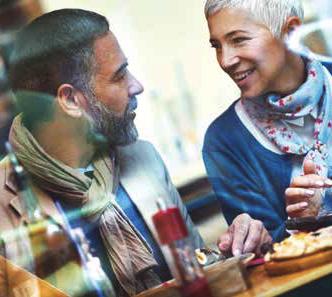
Hearing evaluations are routine for children born in US hospitals. However, hearing loss acquired afterwards can go undetected.
It’s important to catch hearing loss early, say experts.
Joe Kozelsky, retired audiologist in Webster, said that mild hearing losses “are the ones that are easy to overlook” yet they can affect a small child’s ability to understand and learn speech. “There’s a critical stage of language development. If it’s missed, speech and language rarely develop normally if the child has not had adequate hearing at that critical readiness stage.”
Kozelsky is an honorary board member of the Hearing Loss Association of America Rochester Chapter in Fairport and estimates that childhood temporary or permanent hearing loss is at about 20%. Many of these cases relate to illnesses that affect the middle ear.

“There is a prime age for the development of ear problems in children, ages 1 or 2 to maybe 6 or 7 years,” Kolzelsky said.
Some children have an anatomical predisposition to ear infections and if they develop them chronically, along with the typical impairment of hearing, they may miss numerous months of hearing clearly. His own daughter experienced speech regression at 11 months resulting from temporary hearing loss.
“She was very uncomfortable
physically because of the enlarged tonsils,” Kolzelsky said. “Once we discovered that, we could treat it.”
After her ear issues were resolved, her speech and language returned to their previous level. His son had a similar experience. Kolzelsky recommends having children evaluated for middle ear issues if they’re “inexplicably irritated and uncomfortable and whiny and listless, and out of sorts. Not always, but frequently this can cause permanent residual effects.”
Causes of permanent hearing loss include illnesses such as mumps, measles and other childhood disease that are preventable with routine childhood vaccinations. Kolzelsky said that a high fever that goes unchecked can destroy the auditory nerves and thus the child’s hearing. A fever treated with Tylenol that remains higher than 103 degrees Fahrenheit in otherwise healthy children warrants immediate medical attention. Seek care for any fever in babies younger than 3 months old. For those 3 to 6 months, 102 Fahrenheit is considered a high fever.
Kolzelsky noted that low birth weight is a risk for hearing impairment.
Matthew MacDonald, audiologist and director of Dalzells Audiology in Rochester, said that even when
Many people associate hearing loss with older war veterans or people who have worked for 40 years in a noisy factory.
However, many less well-known things can cause hearing loss.
Matthew S. MacDonald, audiologist and director of Dalzells Audiology in Rochester, said that bacterial meningitis, viral inner ear infection and autoimmune disease can cause sensorineural hearing loss due to inflammation in the inner ear (cochlea) and subsequent physical damage to cochlear structures. “Prompt diagnosis and medical treatment with antibiotics or steroids can reduce or reverse these hearing losses,” he said. “Left untreated these hearing losses become permanent.”
The middle ear bones are part of the hearing process. When bony deposits accumulate on these bones (ossification), they become so stiff that their ability to conduct sound lessens.
“Over long periods of time, the ossification can enter the cochlear itself causing sensorineural hearing
loss,” MacDonald said. “Middle-ear surgery and hearing instrument use are common treatments.”
Although unmanaged diabetes can bear many life-altering consequences, hearing loss is not one many people consider. MacDonald said that diabetics with unmanaged diabetes can experience “permanent sensorineural hearing loss secondary to microvascular disease affecting the blood supply to the cochlea. These hearing losses are usually progressive and can result in total deafness, so proper management by an endocrinologist is important.”
Most people realize that listening to loud music greater than 85dB can result in permanent hearing loss. However, they may not know that listening to loud music while strenuously exercising worsens and accelerates the effect, “though typically taking many years to occur,” MacDonald said.
Benign growths on the acoustic nerve can also cause hearing loss. Called an acoustic neuroma or vestibular schwannoma, the growths
newborns pass their hearing screenings, parents should look for signs of typical hearing.
“Genetically-linked hearing losses can begin during the first few years of life,” he said.
He said that parents should watch for the following signs:
From birth to 4 months, an infant should:
• Startle at loud sounds
• Wake up or stir at loud noises
• Respond to your voice by smiling or cooing
• Calm down at a familiar voice
From 4 months to 9 months, an infant should:
• Smile when spoken to
• Notice toys that make sounds
• Turn its head toward familiar sounds
• Make babbling noises
• Understand hand motions like the “bye-bye” wave
compress the auditory nerve, causing hearing loss one on side, along with dizziness and facial nerve weakness.
“Treatments include watch and wait, surgical removal of the growth and radiation treatment,” MacDonald said. “Most individuals are left with some, if not complete, hearing loss in the affected ear.”
Meniere’s disease is another cause of one-sided hearing loss because of one of the fluids in the inner ear is too high. Tinnitus and occasional vertigo can accompany it. MacDonald said that treatment includes medications to manage the vertigo and nausea, diuretics, and anti-anxiety medications.
“Sometimes, people use hearing instruments successfully, but often the resulting sounds are so distorted that they are not useful,” MacDonald said.
Some medications can cause hearing loss. Called ototoxic, the amount of the medication taken matters.
Joe Kozelsky, retired audiologist and honorary board member of the Hearing Loss Association of America Rochester Chapter in Fairport, encourages people to “talk with their doctor about concerns they have about side effects of medications.”
Although cognition is a top priority with head injuries and birth trauma, Kozelsky said that hearing loss can also result.
By contrast, signs of hearing loss include:
• Unresponsiveness to sounds
• Cessation of babbling shortly after it has begun
• Delays in speech and language development
• Misarticulation of speech (especially the phonemes S, SH, F, H, TH, CH and K)
• Communication difficulties
• Difficulty following directions
• Sudden change in academic performance and/or behavior problems
• Often very distracted
• Listens to the TV or radio at a loud volume
“If you hand a child a telephone and they report they can’t hear the talker, but they then move it to their opposite ear and they can, pay attention,” MacDonald said. “Unilateral hearing loss is especially difficult to identify as these children usually have normal or near-normal hearing in their other ear.”
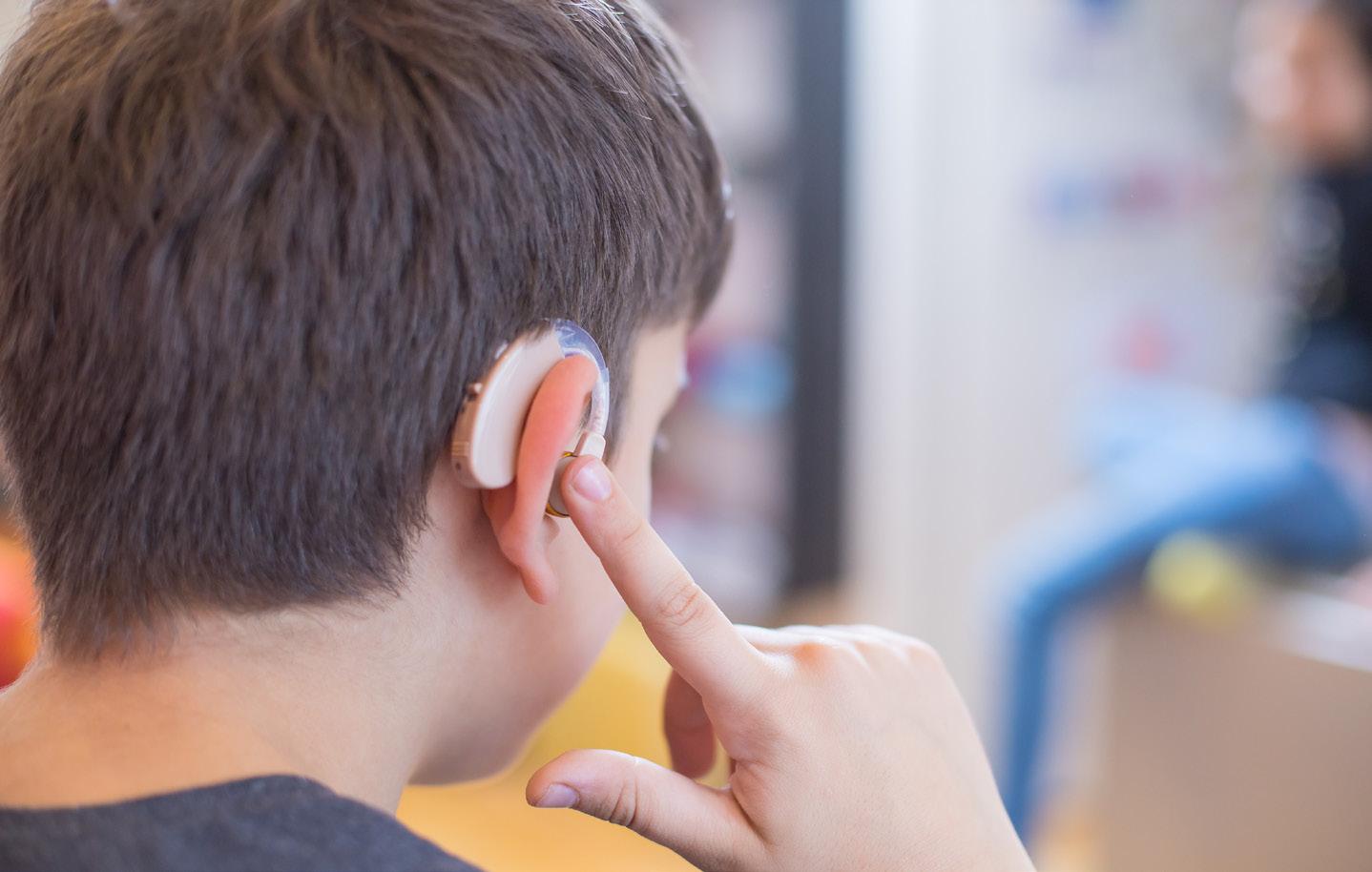
It’s not commonplace, but sudden, unexplained hearing loss happens. Kozelsky said about 5,000 cases a year are reported in the US.
“If someone wakes up and they’re not hearing well, they should seek immediate attention from an otologist,” he said. “If treated immediately, more often than not, it can be totally eliminated. It’s so critical. Some think they should wait a few days, but they’ve got to get in right away. If you wait, very often it’s not reversible at all.”
 By Deborah Jeanne Sergeant
By Deborah Jeanne Sergeant
For years, health experts touted vitamin D as a companion supplement to aid in absorption of bone-strengthening calcium. Then vitamin D became a veritable panacea; research linked it to supporting nearly every bodily function and system.
More recently, the importance of vitamin D has been minimized.
“The pendulum is swinging,” said Melissa Goddeau, registered and certified dietitian nutritionist at Nutrition Care of Rochester, PLLC in Rochester.
“Before, we found ‘the one’ vitamin that will fix everything. But vitamin D does a lot in the body, helping the body absorb calcium.”
A recent article by the Cleveland Clinic stated that people who are healthy and not undergoing treatments for health problems should not bother taking vitamin D.
The reputable medical website WebMD cites several research studies in a recent article to show that vitamin D isn’t a superstar supplement, as it doesn’t appear to lower risk of cancer, stroke or heart attack as once thought (although its role in calcium absorption remained intact).
The National Institutes of Health link excessive vitamin D with stomach discomfort, unusual mental symptoms, and kidney problems.
Goddeau believes that some of the previous importance placed on vitamin D stemmed from decreasing consumption of fortified foods such as milk. Only a handful of foods contain vitamin D and most of them are fish.

Goddeau also said that D-3, such as in fortified milk, is the most bioavailable form of vitamin D. People previously supplementing with D-2 wouldn’t receive the benefit provid-
So, after a month of holiday eating, your pants are still too tight and you’re desperate to lose the extra weight as quickly as possible, but how much can you lose in a month?
Experts say there is no speedy way to shed pounds.
How long does it take to lose weight? According to the U.S. Centers for Disease Control and Prevention, people who succeed do it gradually at about 1 to 2 pounds per week, which translates into 4 to 8 pounds a month.
Because safely losing weight is such a gradual process, it can take six months or more to lose 30 pounds.
But it’s well worth it as you change your lifestyle and look and feel better, experts say.
Losing weight permanently is really a matter of changing your lifestyle and diet. The best way is to set safe, achievable goals that you can meet.
That all starts with understanding that fad diets or highly restrictive eating plans may prompt fast weight loss, but not permanent weight loss.
“Fad diets, by today’s standards, do not work. By work, I mean a sustainable lifestyle that promotes a healthy weight and meets the nutrient needs of the individual,” said Samantha Heller, a nutritionist at NYU
ed by D-3, which perhaps spurred more health experts to push taking supplements. This may account for the previous enthusiasm for vitamin D supplementation.
The body generates vitamin D when exposed to sunlight. However, people in Upstate New York experience little exposure to sunlight all winter.
“Half the population has low vitamin D levels, it’s estimated,” Goddeau said. “And that’s not even looking at only high-risk groups, like people on certain medication or the elderly. That’s the general population.”
She encourages people to ask their primary care provider to test their vitamin D level to see if supplementation is needed. Most providers will not bring up vitamin D as part of a routine visit.
Marge Pickering Picone, owner of Professional Nutrition Services in Webster, thinks that many people overlook supplementing with vitamin D.
“It’s almost a preventive supplement that works in many ways,” she said.
She linked vitamin D with supporting the health of the immune system, emotional health, bone and muscle health. But “it’s not like a medication with an immediate effect. It’s something your body requires for long-term sustenance.”
In addition to getting the vitamin D level checked, she encourages clients to ensure their digestion is up to par, as that is vital to absorbing any vitamin D-3 supplements taken.
“I don’t agree with taking D-2 as it’s hard on the liver and kidneys,” she said. “Vitamin D-3 is more available and absorbable.”
Langone Health in New York City.
“We need to buckle down and face the fact that a constant diet of fast, junk and prepared foods is not healthy,” Heller stressed in a recent HealthDay story. Beware: You can gain weight eating anything — even healthy food — so portions matter, she warned.
Once you’ve taken off the weight, rely on a healthy diet and exercise to keep the pounds off.
The first step to a successful weight-loss program is taking a hard look at your diet. Make a list of what you eat and drink, including sugar-sweetened drinks and alcohol, the CDC says. Also, list your triggers to overeating. These can be:
• Eating too fast.
• Always cleaning your plate.
• Eating when not hungry.
• Eating while standing up (may lead to eating mindlessly or too quickly).
• Always eating dessert.
• Skipping meals (or maybe just breakfast).
But don’t just focus on the negative. Give yourself points for your good eating habits.
Also, list those things you do that are linked to overeating. These can include:
• Grabbing your favorite snack food.
• Watching TV.
• Eating before or after stress at work.
• Not planning a healthy meal.
• Eating sweets at work or
The daily value for vitamin D is 800 IU (20 mcg). Few naturally occurring food sources of vitamin D-3 exist and most of those are fish. Mushrooms provide only traces of the less helpful D-2 and they are the only vegan, non-supplemental source of either type of vitamin D.
Egg yolk contains 37 IU of vitamin D, although pastured hens may provide three to four times that amount because of their exposure to sunlight. Cod liver oil boasts 450 IU per teaspoon. Canned light tuna offers 269 IU per 3.5-ounce helping.
Try 3.5-ounce servings of these fish for more D-3:
Salmon 526 IU
Fresh Atlantic herring 214 IU Canned sardines 193 IU Halibut 190 IU Mackerel 643 IU
In addition to milk, fortified foods include some brands of breakfast cereal, orange juice and yogurt.
during the day.
• Hitting a fast-food drivethrough on the way to work.
• Using food to fight boredom or lift your mood.
Knowing your triggers you can make a special effort to avoid them, or replace them with healthier options. For example, you can bring healthy snacks to work and train yourself to avoid stopping at fastfood drive-throughs.
Going back to your list, you can start by replacing unhealthy eating with healthy choices and healthy habits.
Only eat when you are hungry and don’t gobble your food, rather, eat slowly. If you eat when bored, try taking up another activity that doesn’t involve food.
A healthy diet consists of fruits, vegetables, whole grains and dairy products, the CDC says. Also add a variety of proteins, such as seafood, lean meats and poultry, eggs, beans and peas, soy products, nuts and seeds.
A healthy diet should be low in sugar, salt, saturated and trans fats and cholesterol.
You can swap water, seltzer, or unsweetened fruit juices or diet drinks, for sugary drinks and sodas.
But it’s not only what you eat, but how much you eat. Weight gain and weight loss is a matter of how many calories you eat versus how many calories you burn.
Arecent human study published in December in the scientific journal “Antioxidants” found that consuming grapes protected against ultraviolet (UV) damage to the skin.
Study subjects showed increased resistance to sunburn after consuming 2 ¼ cups of grapes every day for two weeks. Additionally, subjects displaying UV resistance also demonstrated unique microbiomic and metabolomic profiles suggesting a correlation between the gut and skin.
Natural components found in grapes known as polyphenols are thought to be responsible for these beneficial effects.

This new study reinforces previous research in this area, according to physician John Pezzuto, lead author of the paper and professor and dean of the Western New England University College of Pharmacy and Health Sciences in Springfield, Massachusetts.

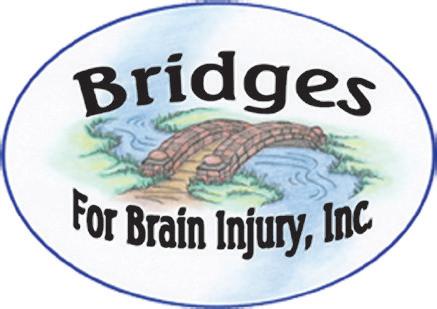
In this investigation with 29 human volunteers, researchers examined the impact of consuming whole grape powder — equivalent to
2.25 cups of grapes per day — for 14 days against photodamage from UV light. Subjects’ skin response to UV light was measured before and after consuming grapes for two weeks by determining the threshold dose of UV radiation that induced visible reddening after 24
hours – the minimal erythema dose (MED). Additionally, metabolomic analysis of the gut microbiome, blood and urinary samples was undertaken.
Ultimately, one-third of the subjects demonstrated UV resistance following grape consumption, and these same subjects displayed significant differences in the microbiome and
metabolome compared with the nonresponders.
Notably, the same three urinary metabolites were depressed in the UV-resistant group. One metabolite in particular (2’-deoxyribose) is a strong indicator of reduced photodamage and suggests unique genetic profiles of relevance for personalized medicine.
Furthermore, three of the UV resistant subjects showed a durable response — UV protection remained after reverting back to no grape consumption for 4 more weeks. This work suggests that a segment of the population is capable of resisting sunburn following grape consumption, and that there is a correlation between the gut-skin axis and UV resistance.
Over 3 million Americans are affected by skin cancer each year, largely as a result of exposure to sunlight. It is estimated that one in five Americans will develop skin cancer by the age of 70.
Most skin cancer cases are associated with exposure to UV radiation from the sun: about 90% of nonmelanoma skin cancers and 86% of melanomas, respectively.

Additionally, an estimated 90% of skin aging is caused by the sun.
“The phrase ‘Let thy food be thy medicine and medicine be thy food’ dates back to the time of Hippocrates,” notes Pezzuto. “Now,” he adds, “after 2500 years, and as exemplified by this human study conducted with dietary grapes, we are still learning the reality of this statement.
Care Management Services: Services people with disabilities /chronic health conditions 18 and up. Our Care Managers coordinate all the community services someone could need to support them in living as independently as possible. Includes assistance linking to doctors and providers, finding a safe place to live, finding a way to get to medical appointments, securing financial and medical benefits and more.
Social Day Services: Open MondaySaturday 8am-4pm & serves people with disabilities/chronic health conditions 18 and up. Based in a country setting, our program is busy, interactive and fun with daily opportunities for animal encounters! Services include socialization with peers, meals/snacks, medication reminders, cognitive exercises and games, recreational activities and outings. Must be Medicaid eligible. Serving 6 Counties In the Greater Rochester area ciacoviello@bridgesforbraininjury.org | www.bridgesforbraininjury.org


Offering –Care Management Services: Serves people with disabilities/ chronic health conditions 18 and up. Our Care Managers coordinate all the community services someone could need to support them in living as independently as possible. Includes assistance linking to doctors and providers, finding a safe place to live, finding a way to get to medical appointments, securing financial and medical benefits and more.
– Offering –Care Management Services: Serves people disabilities/ chronic health conditions and up. Care Managers coordinate all the community services someone could need to support them in living as as possible. Includes assistance to and providers, finding a safe place to live, finding a way to get to medical appointments, securing financial and medical benefits and more.


February may be the shortest month of the year, but it’s loaded with important holidays and events.
A lesser-known food holiday that happens on Feb. 23, but one still worthy of celebration, is National Banana Bread Day. Clearly, its founder thinks it’s the best thing since sliced bread!
Bananas, the star of this delicious quick bread, are one of the world’s most popular fruits, with annual worldwide consumption exceeding 100 billion. On average, Americans eat about 90 bananas per person every year.

Affordable and accessible, bananas have numerous health benefits that deserve some serious unpeeling.
Bananas are a rich source of carbs, which appear mainly as starch in unripe bananas and sugars in ripe bananas. Carbs provide fuel for daily activities and workouts and may also help reduce exercise-related muscle cramps and soreness. For those with diabetes, bananas can often be worked into one’s overall meal plan or as a healthy snack to aid with stable blood sugars.
Hearts love bananas for more reasons than one. A good source of potassium— an essential mineral for maintaining normal blood pressure—bananas help keep our tickers ticking.
The fiber in bananas also does a heart good by helping to reduce blood pressure, quell inflammation, and ferry out bad cholesterol.
Lastly, bananas are high in vitamin B6, a critical vitamin that helps break down an amino acid (homocysteine) that, when elevated, has been linked to greater heart disease risk.
As mentioned, bananas boast a decent amount of fiber, with one banana providing about 3 grams of both soluble and insoluble fiber. In addition to lowering cholesterol levels, a banana’s soluble fiber absorbs water in the gut, which then forms a gel that slow downs digestion, keeps you feeling full, and slows the stream of sugar into your blood. Insoluble fiber, on the other hand, adds bulk to your stool, which helps keep you regular. In general, foods that are high in fiber help with both weight maintenance and loss.
Just over 100 calories, nutrient-rich bananas are also a good source of immune-boosting vitamin C and have no fat, cholesterol or sodium.
Adapted from wellplated.com
1½ cups ripe bananas, mashed (about 3-4)
1 large egg
1/3 cup plain Greek yogurt
2 tablespoons canola oil (or substitute applesauce)
1/3 cup light brown sugar
¼ cup pure maple syrup
1 teaspoon pure vanilla extract
1 teaspoon baking soda
½ teaspoon ground cinnamon
½ teaspoon salt
1½ cups white whole wheat flour
¾ cup chopped walnuts or pecans
Place the rack in the center of your oven and preheat the oven to 350 F. Lightly grease a 9-by 5-inch loaf pan and set aside.
Mash the bananas in the bottom of a large bowl until mostly smooth. Whisk in the egg, then the yogurt and oil.
Whisk in the brown sugar, maple syrup, and vanilla. Sprinkle the baking soda, cinnamon, and salt over the top, then stir until combined. Gently
Select bananas based on your usage timeframe. Choose yellow bananas for immediate use. Pick bananas that are slightly but not overly green to use later. Always, look for plump bananas without depressions or dark areas (indicates bruising). Store bananas at room temperature away from direct heat and sunlight.
stir in the flour until barely combined, then fold in any mix-ins.
Scrape the mixture into the prepared pan. Bake for 50 to 60 minutes, until a toothpick inserted in the center comes out clean. Check at the 35-minute mark and tent with foil if the bread is browning too quickly at the corners. Place the pan on a wire rack and let cool for 15 minutes. Remove from pan and place on rack to finish cooling completely (for neat slicing), or enjoy warm and don't worry if the slices are messy.
TO MAKE MUFFINS: To bake this recipe as 12 muffins instead of a loaf, lightly grease a standard muffin tin, then divide the batter evenly among the cups. Bake at 350 F for 20 to 22 minutes, until a toothpick inserted in the center comes out clean and the muffins spring back lightly when touched.
Anne Palumbo is a lifestyle columnist, food guru, and seasoned cook, who has perfected the art of preparing nutritious, calorie-conscious dishes. She is hungry for your questions and comments about SmartBites, so be in touch with Anne at avpalumbo@aol.com.



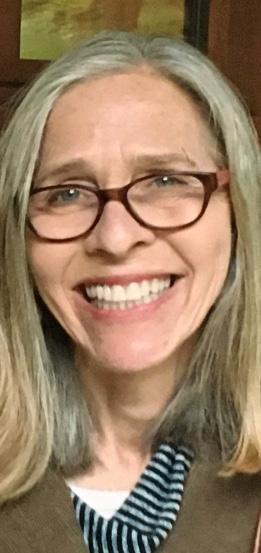
You’ve heard the terms “heart attack” and “cardiac arrest,” but do you really know what they mean?
Each describes a life-threatening cardiac event but understanding the difference could help you save someone’s life.
“A heart attack is a plumbing issue — an artery that brings blood to the heart is blocked,” says physician Lorna Fitzpatrick, vice president medical affairs and senior medical director at Excellus BlueCross BlueShield. “Victims are usually conscious, and while they need medical attention quickly, an electrical charge from an automated external defibrillator (AED) may not be needed because
often, the heart is beating and the victim is breathing.”
According to the U.S. Centers for Disease Control and Prevention (CDC), signs that someone is having a heart attack include chest pain or discomfort; feeling weak, light-headed, or faint; pain or discomfort in the jaw, neck, or back; pain or discomfort in one or both arms or shoulders; and shortness of breath. Other symptoms of a heart attack could include unusual or unexplained tiredness and nausea or vomiting. Women are more likely to have these other symptoms. Anyone experiencing one or more of these symptoms should seek medical attention immediately.
“Cardiac arrest, also known as









The U.S. Food and Drug Administration in January approved a second Alzheimer's drug, lecanemab, despite reports of rare brain bleeds linked to use of the drug in some patients.
However, the FDA pointed to the drug's benefits, as well.
“Alzheimer's disease immeasurably incapacitates the lives of those who suffer from it and has devastating effects on their loved ones,” physician Billy Dunn, director of the office of neuroscience in the FDA's Center for Drug Evaluation and Research, said in an agency news release. “This treatment option is the latest therapy to target and affect the underlying disease process of Alzheimer's, instead of only treating the symptoms of the disease.”
Lecanemab, made by Eisai and marketed by Biogen as Leqembi, will be only the second Alzheimer's drug to receive the FDA's blessing in the past 18 months; the agency's speedy approval of the drug Aduhelm in June 2021 generated controversy in










the medical community over its lack of effectiveness, brain bleed concerns and hefty price tag.
But Alzheimer's experts said the story is somewhat different with Leqembi.
"Unlike Aduhelm, which had an incomplete data set and where clinical trial data failed to demonstrate a definitive slowing in cognitive decline, lecanemab showed statistically significant slowing in cognitive and functional decline, as well as reduction of brain amyloid levels, and downstream beneficial effects on other markers of neurodegeneration," physician Sarah Kremen, who leads the Alzheimer's Disease Clinical Trials Program at Cedars-Sinai in Los Angeles, said in a statement.

“We need — and are on the way to having — multiple drugs we can combine to personalize treatments to match each patient's Alzheimer's pathology, which will have a much greater impact on slowing the disease,” physician Howard Fillit, co-founder and chief science officer
sudden cardiac arrest, is an electrical issue that occurs when the heart’s electrical system malfunctions,” says Fitzpatrick. “Without warning, the victim collapses and stops breathing.”
The heart is electrically active but is unable to beat in a regular rhythm, and therefore unable to pump blood to the brain or other organs.
Medical attention is needed immediately, or the victim will die.
According to the American Heart Association, more than 350,000 Americans outside of hospitals die each year from sudden cardiac arrest, meaning they were stricken at home or while out in public.
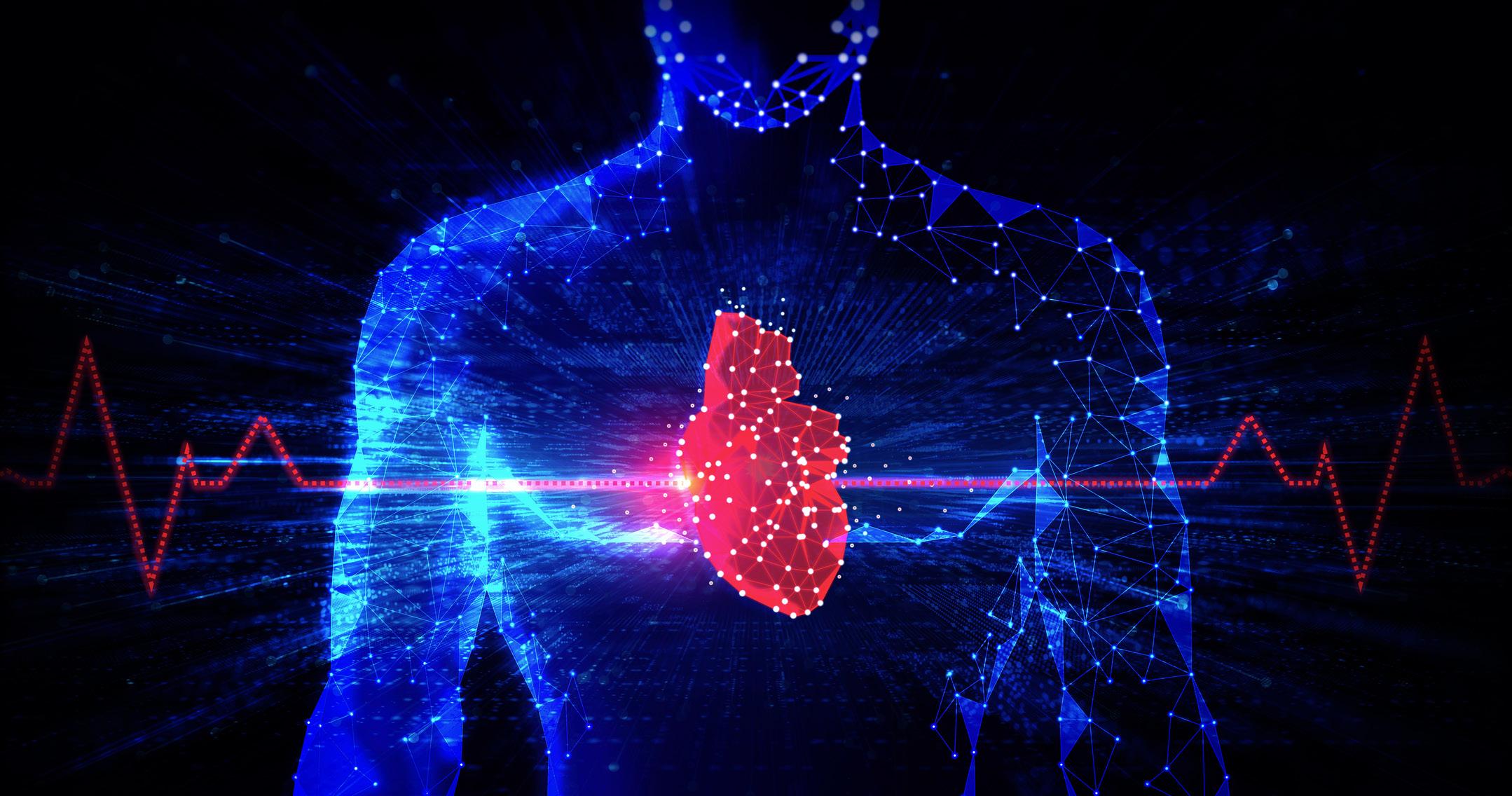
“Cardiac arrest can sometimes
of the Alzheimer's Drug Discovery Foundation, said in a statement.

“Today's news is incredibly important and a source of optimism not only for patients, but also for the medical and research community,” said Fillit. “It shows us that our years of research into what is arguably the most complex disease humans face is paying off.”
Still, Leqembi has been linked to two deaths from brain bleeds among people who used it in trials.
And not every patient would stand to benefit from Leqembi, stressed the Cleveland Clinic's Babak Tousi, a medical doctor. He led the portion of the clinical trial that was conducted at the Cleveland Clinic, in Ohio.
“The trial was designed for patients in the earlier stage of Alzheimer's disease, people with mild cognitive impairment or early stage of dementia,” Tousi noted. “It will probably be for people who have early stage of disease, with no to minimal assistance needed for activities of daily living.”
The results of the 18-month trial, which involved about 1,800 patients, gained wide attention when they were published Dec. 1 in the New England Journal of Medicine, Tousi noted.
In the trial, early-stage Alzheimer's patients who took Leqembi showed a 27% reduction in their


be reversed if CPR is immediately performed, and an AED is used within minutes to shock the heart into stopping its chaotic rhythm,” says Fitzpatrick. “You never know where or when it will occur, which is why it is vital to have as many people as possible trained in CPR and have AEDs available in places where people gather and also participate in athletic activities.”
Many AEDs issue spoken commands. If the device detects a shockable rhythm, it will provide voice instruction on how to deliver an electrical charge. If it doesn’t detect a shockable rhythm, it will not allow a shock to be administered. In the absence of any cardiac electrical activity, CPR offers the only chance for survival until medical professionals arrive.
Fitzpatrick urges everyone to take CPR training where they’ll also become familiar with using an AED. To find a CPR class near you, visit RedCross.org, or the American Heart Association website at Heart.org.
mental decline compared to patients in the placebo arm of the trial. The drug's users also showed less evidence of amyloid protein plaques in their brain compared to non-users.
“Lecanemab clearly did what it was designed to do — it removed amyloid plaque,” said Tousi, who heads the Clinical Trials Program at the Cleveland Clinic Center for Brain Health. “The results demonstrated all the downstream effects we hoped would happen in terms of reduction of biomarkers and less clinical decline on several functional and cognitive measures. So, this difference will likely translate to a longer period of independent living for patients.”
For decades, one health ailment continues to dominate as the most severe. Heart disease is the leading cause of death for men, women and people of most racial and ethnic groups in the United States, according to the Centers for Disease Control and Prevention.
One person dies every 34 seconds in the United States from cardiovascular disease.
It is a condition that remains a health issue even globally. The World Health Organization states cardiovascular diseases are the leading cause of death globally, taking an estimated 17.9 million lives each year.
Cardiovascular diseases are a group of disorders of the heart and blood vessels and include coronary heart disease, cerebrovascular disease, rheumatic heart disease and other conditions.
“Heart disease or the deposition of cholesterol plaque in our arteries, is both one of the most common heart issues as well as the top cause of death in adults,” said physician Andrew Mathias, who is part of UR Medicine Cardiac Care in Rochester. “This plaque can build up over time, especially in people who smoke or have high blood pressure, high cholesterol or diabetes. The reality is, as individuals, we have a lot of power to minimize the risk of heart disease by our lifestyle choices such as eating right, exercising regularly and avoiding tobacco use.”
Mathias gives five aspects of heart health that patients should know.
Having a family health history of heart disease makes you more likely to develop heart disease. In some cases, having family members with heart disease at age 50 or younger can be a sign of familial hypercholesterolemia, a genetic disorder that causes high cholesterol, according to the Centers for Disease Control and Prevention. Health officials suggest taking time to collect your family health history of heart disease and share this information with your doctor and other family members.
“Family history of early heart disease, especially heart attack, is an independent risk factor in addition to the other traditional risk factors, such as smoking, high blood pressure, high cholesterol, diabetes,” said Mathias. “If you have a family history of a primary relative, which is your mother, father or sibling, who had a heart attack before the age of 50 for men or 60 for women, talk with your physician about whether more aggressive screening or risk-factor modification is needed.”
and women have different
The most common symptom of a heart attack for both men and women is pain or pressure in the center or left-center of the chest. Recently, studies have shown that women experience heart attacks quite differently than men. Both men and women can also experience pain in the jaw,
neck, arms, shoulders, back or upper abdomen.
“Women may also experience nausea, shortness of breath, lightheadedness, or fatigue. If you experience a sudden onset of a combination of these symptoms, it could be a heart attack and you should dial 911 to get medical attention as soon as possible,” said Mathias.
“Men and women should be aware of the signs of a heart attack as well as preventable risk factors that contribute to heart disease and increase the risk of both heart attack and stroke.”
There can be significant differences between heart ailments for youth and adults. Patients who are younger than 18 typically get diagnosed with some type of congenital heart disease.
“Fortunately, there are not any heart issues that are extremely common in children and youth. Abnormal heart rhythms and genetic or congenital heart diseases are the most prevalent heart issues for youth,” said Mathias.
It’s easy to be fooled by misconceptions. Relying on false assumptions can be dangerous to your heart.
“A common myth is that heart disease is primarily a disease that affects men. This is far from the truth,” said Mathias. “Heart disease is the leading cause of death for both men and women. Population health studies show that outcomes for women who have heart attacks lag behind men partially due to the lower recognition of their heart attack symptoms even among health care professionals.”
There are a lot of ways people can improve heart health and reduce their risk of heart disease. Healthy behaviors like watching your diet and exercising regularly are important, along with avoiding the use of tobacco, alcohol or drugs.
“To maintain a healthy heart,
U.S. stroke deaths have dramatically declined in the past several decades. But, researchers caution, their new study also found the potential for a resurgence.
“After nearly four decades of declining stroke-related mortality, the risk appears to be increasing in the United States. Our research underscores the need for novel strategies to combat this alarming trend,” said lead study author Cande Ananth. He is chief of epidemiology and biostatistics in the obstetrics, gynecology and reproductive sciences department at Rutgers Robert Wood Johnson Medical School in New Brunswick, New Jersey.
“This study didn't identify a cause for this trend, but other research suggests the main culprits
are increasing rates of obesity and diabetes,” Ananth said in a Rutgers news release.
The analysis of U.S. stroke deaths from 1975 to 2019 found that stroke deaths plummeted from 88 per 100,000 for women to 31. They dropped from 112 per 100,000 to 39 for men.
Total stroke deaths fell despite the rise in age-adjusted risk because rates grow substantially with age.
Without further improvements in stroke prevention or treatment, the most recent figures show stroke death totals rising as millennials age. (Millennials were born roughly from the 1980s through 1990s.)
While age-adjusted stroke deaths per 100,000 people bottomed out in 2014, they climbed again during the
study period's last five years.
“Starting around 1960, the later you were born, the higher your risk of suffering a fatal ischemic stroke at any particular age,” Ananth said.
For the study, the researchers used a comprehensive death-certificate database to identify virtually every adult under the age of 85 who died from a stroke during the 44 years of the study period. There were more than 4.3 million stroke deaths in all.
The investigators detected a steady rise in age-adjusted stroke risk from the late 1950s to the early 1990s.
The study also found that ischemic strokes have declined more than hemorrhagic strokes. In ischemic
Physician Andrew Mathias is part of UR Medicine Cardiac Care in Rochester. “A common myth is that heart disease is primarily a disease that affects men. This is far from the truth,” he says.
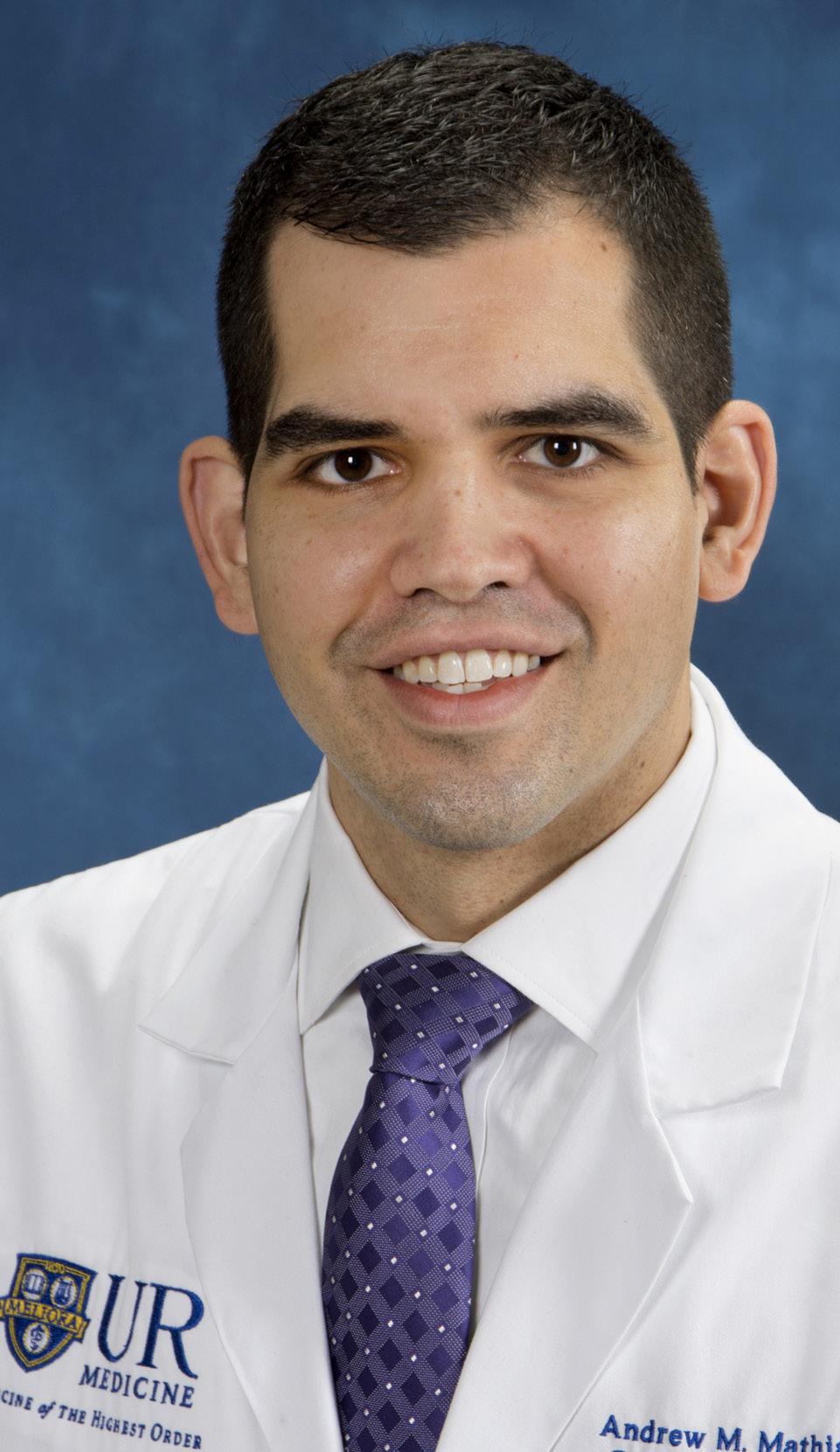
choosing a primarily plant-based diet with limited intake of red meats, saturated fats and sugary foods is important,” said Mathias. “Try to exercise 30 minutes a day, five days per week doing an activity that gets your heart rate up, like a brisk walk. The perfect diet and exercise plan will be different for everyone. One of the keys is finding foods and exercises that you enjoy and it will be easier to maintain these behaviors over time.”
In addition, your cholesterol level is a major factor in the development of artery plaque and heart attack.
“Diet and exercise and maintaining a healthy weight are important for maintaining a healthy cholesterol level. Knowing your cholesterol is a good way to quantify your risk for heart disease. Your doctor can order a simple blood test to monitor it,” he added.
strokes, blood vessels to the brain are blocked. In hemorrhagic strokes, blood vessels leak or burst.
The fatality rate for ischemic strokes fell roughly 80%, compared to 65% for hemorrhagic strokes, the researchers noted.
Disparities between men and women diminished with age, the findings showed. While at age 55, men were more than twice as likely as women to have a fatal stroke, the rates were virtually identical at age 85.
The findings were recently published in the International Journal of Epidemiology.
Ever since optometrist William Feinbloom introduced the first low vision glasses in 1936, there have been low vision solutions that, for whatever reason, are not known to the general public (unlike hearing aids.)
People with vision-limiting conditions are often frustrated because they have been told that there is nothing more that can be done for their vision when, in fact, there often is.
What is Low Vision?
Common medical definitions of low vision include:
• Low vision is vision loss that can’t be corrected with glasses, contacts, medication, or surgery;
• Low vision is a term that refers to vision 20/70 or worse;
• The International Academy of Low Vision Specialists define it as the result of having an eye condition that prevents someone from doing the things that they want to do.

They include macular degeneration, Stargardt disease, glaucoma, ocular albinism, retinitis pigmentosa, diabetic retinopathy, stroke-hemianopsia. This is not an exhaustive list and there does need to be some usable vision to work with.
Reading books, newspapers, magazines, sheet music, labels on packaging including prescriptions. They also want to see faces, drive, play cards, crafts, watch TV, and see the food on their utensils.
A low vision specialist identifies the correct hands-free device, typically a very specialized type of glasses (microscopes, telescopes, E-Scoop, prismatic reading glasses), to match the eye condition, specific vision, and task that the person wants to do. They may also recommend wearable technology. This could mean that you may need more than one device depending on what you want to see and do.
As the first definition of low vision above states, a low vision specialist can’t fully correct the eye condition. What they do is improve the ability to see and, thereby do, with the person’s usable vision by enhancing, magnifying or expanding the peripheral vision.
How Do I Know if I Have Low Vision?
• Do you have a vision condition?
• Are there things that you can no longer do as a result?
• Does not being able to do these things frustrate you?
If the answer to all three of these questions is ‘Yes’, then you would benefit from a low vision consultation. If the answer to any of these questions is ‘No’, you do not have low vision (you may have poor vision.)
Can Young People Have Low Vision?

Yes. Young people can have the following conditions:
• Stargardt disease (juvenile macular degeneration);
• Nystagmus (where the eyes make repetitive, involuntary horizontal movements);
• High astigmatism (causes blurred distance and near vision);
• Congenital cataracts (a rare birth defect);
• Achromatopsia (color deficiency);
• Rod-cone dystrophy;
• Strabismus (crossed eyes);
• Amblyopia (lazy eye);
Things that young people often want to do are see the board better at school (not have to sit in the front row!), drive, and read better.
How
a
At a low vision office appointment, your low vision specialist may conduct a practical low vision evaluation per The Richard Shuldiner, OD and William Feinbloom, OD philosophy & methods of providing low vision care.
– The appointment does not involve eye drops to dilate the eyes
– The doctor uses an eye chart with larger numbers, the Feinbloom low vision chart
– Your doctor will request that you bring samples of activities that you regularly perform (stock market reading material, needlework, etc.)
– The low vision specialist will prescribe tailor-made glasses specific to your vision and what you want to do

The International Academy of Low Vision Specialists has a doctor directory on its website — www. ialvs.org. People do not need a doctor referral to make an appointment.
is an optometrist who has been serving low vision patients for over 50 years. He owns Low Vision Optometry of Western New York, which has locations in Buffalo, Rochester and Syracuse. For more information, call 866-446-2050 or visit www.kornfeldlowvision.com
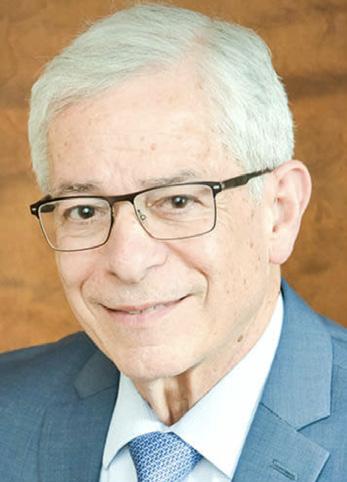
Many aspects of health change as you enter older adulthood, including nutritional needs.
With lessening activity, caloric needs may decrease, but the same amount of nutrients — and in some instances, more — are still needed.
“The tricky part is finding nutrient-dense foods that are low in calories,” said Haylee Pink, dietetic intern working at Geneva General Hospital.
As the sense of taste and smell may decline, a person’s food preferences often shift toward sweet, salty foods and “comfort foods” and away from things such as vegetables, beans and whole grains. Replacing a balanced meal with crackers, chips, processed foods and pieces of candy can lead to malnutrition and weight gain.
“No matter your weight, you could be malnourished,” Pink said. “The weight gain could be fat, not muscle. You’re at a higher risk for malnutrition, muscle loss and dehydration.”
She recommends finding ways to swap foods or make unappealing foods more palatable. For example, eating a serving of whole fruit instead of eating candy to satisfy a craving for sweets. Or using sodium-free seasonings to add flavor to foods instead of salt.
“Instead of adding salt to something while you’re cooking, sprinkle it on top when you’re done and you’ll add less,” Pink said.
Thinking outside accustomed foods can lead to more nutritious food choices. For example, a smoothie that combines raspberries with a less palatable vegetable like kale or carrots can make it easier to consume more veggies. Or, snacking on hummus with whole grain crackers instead of potato chips and French onion dip.
Pink recommends adding protein
powder to smoothies, yogurt or cottage cheese, as most older adults consume too little protein. Some older adults on a fixed income struggle to afford many sources of protein. They may experience difficulty in chewing some sources of protein. Slow cooker chicken, eggs, tuna, nut butters and yogurt are few examples of protein sources that are both easy to chew and reasonably affordable.

“A lot of senior centers have exercise classes designed for older adults and sometimes, they’ll offer meals to people who attend,” Pink said. “What’s helpful is they’re usually quite balanced with a healthy grain and carb, fruits and vegetables.”
To ensure adequate hydration, it helps to take along a filled water bottle. Many older adults experience lessened sensitivity to thirst.
“Just seeing a water bottle can be a good reminder,” Pink said.
Marge Pickering Picone, owner of Professional Nutrition Services in Webster, said that many older adults’ nutritional needs change because of medication they take, such as prednisone, which decreases calcium levels in the bones as a side effect.
“You have to know what you’re doing with supplements,” Picone said. “Coaching is important. I have more seniors calling me because they have aches and pains and digestive issues. They’re responding with side effects to their medications.”
Like Pink, she recommends that more older adults look at their protein intake and find good sources of protein they can consume regularly.
“Protein is needed for muscle and the brain,” Picone said. “You can eat half your body weight in grams in protein a day and most people don’t get a third of that. As you get older, you need to eat more quality than quantity.”
Protein shakes represent an easy way to increase protein intake.
Local philanthropist Mary Clark
behind the creation of the Community Health Grants, with applications accepted annually.
These grants enable the foundation to invest directly in projects and organizations benefiting the health of the community. Grants awarded through a competitive application process range from $500 to $2,500.

For complete applicant guidelines and to apply, visit www.
ThompsonHealth.com/MCTGrants. For more information, call the Foundation at (585) 396-6155.

Managing Type-2 diabetes as an older adult is a little more complicated than with younger people.
Often by this stage in life, other health issues have arisen.
Doctors tell diabetic patients to exercise. However, by this stage of life, more limited mobility from arthritis or injuries can make it more challenging to work out.
The care for other health conditions can make it difficult to take on all of the care necessitated by diabetes, such as managing blood pressure and cholesterol, smoking cessation, annual eye exams, careful foot care, annual urine and blood tests for kidney health and dietary changes.
Seeking help from a certified diabetes educator can assist in managing the various aspects of the condition. Dietary changes may be most difficult of all, but one of the most needful, and a dietitian or a certified diabetes educator can help.
“You want to be consistent,” said Haylee Pink dietetic intern working at Geneva General Hospital. “That’s the number one thing. We don’t want patients waking up not hungry and
then they next feel hungry at 1 p.m. and have a piece of cake.” Instead, eating balanced meals at regular times can help patients keep their blood sugar level stable. Pink recommends pairing carbohydrate sources with protein sources, such as fruited yogurt.
“It helps control their blood sugars,” she said. “That can be hard when you crave candy or cookies but pairing it with something nutritious helps lower the effect of the glucose.”
A few other choices could include cheese or cottage cheese with a whole grain cracker or peanut butter on slices of apple.
“Look at the fiber intake,” Pink added. “Higher fiber helps with blood sugar.”
Whole grain toast and popcorn present two sources high in fiber, but Pink noted that the popcorn should be only lightly salted and seasoned with olive oil, “not like the buttery movie theater popcorn.”
Exercising regularly can help maintain blood sugar. Pink advises eating a small amount of carbohydrates before an exercise session. Swimming, elliptical workouts and
There are a number of small adjustments and modifications you can make to your parent’s home to help protect them from falls and fires, both of which cause thousands of injuries and deaths each year. Here are some tips to get you started.
• Eliminate tripping hazards: Since falls are the leading cause of home injury among seniors, a good place to start is to pack away your parents’ throw rugs which are common tripping hazards or use carpet tacks or double-sided tape to secure them. You may also need to adjust your parents’ furniture so there are clear pathways to walk through and position any electrical or phone cords along walls and out of the way.
For hardwood steps, consider attaching a nonslip tread to each one to provide traction and help to see the edge. And for added protection in the bathroom buy some nonskid rugs for the floors and use adhesive nonslip treads or a mat with rubber suction inside their tub or shower stall.
• Improve lighting: Good lighting is essential for safe aging in place, so check the wattage ratings on your parents’ lamps and light fixtures, and
install the brightest bulbs allowed, and add supplementary lighting if necessary.
You should also purchase some dusk to dawn nightlights for the bathroom and in the hallways that light up when the sun goes down. And mount some motion sensor lights outside the front and back doors and in the driveway that automatically come on as someone comes and goes after dark.
• Get grab bars: These can significantly reduce their risk of bathroom falls. Install them where they enter the shower or tub and on a wall inside the stall, but don’t use grab bars that attach with suction. Instead, have wall-mounted bars put in by someone who can affix them to the wall studs. It’s also best to choose bars whose surfaces are slightly textured and easier to grip.

• Ensure railings are stable: Wherever they have steps — stairways, entryways or basements — they need sturdy railings. Ideally, they should be on both sides of the steps.
• Prevent cooking fires: There are several affordable products you can purchase to help prevent home
senior yoga all represent forms of exercise gentle for people with arthritis.
Pink also tells people with diabetes to go to their regular check-ups with their physicians. They should also keep their healthcare provider abreast of any changes in diet, medication, supplements and over-thecounter items.
“People should be met where they are and take steps to improve health,” Juliann M. Mellen, dietitian with Upstate University Hospital. “Management includes lifestyle modifications, diet, exercise, smoking cessation, treating hypertension and dyslipidemia, keeping medical appointments, and medication management if needed.”
Although it may be more challenging for older adults to maintain healthy blood glucose levels if they have comorbidities, poor health or cognitive decline, Mellen said that making these changes can positively impact quality of life.
“Lifestyle changes include weight reduction if needed,” Mellen said.
A good goal could be to increasing activity to a goal of 150 minutes a week minimum, broken into 30-minute brisk walks five days a week along with weight training two days a week to improve lean body mass.
“MyPlate for diabetes is a good guide for planning meals,” Mellen said.
This means filling half of a standard nine- or 10-inch plate with nonstarchy vegetables raw or cooked, and the other half of the plate with lean protein and starchy foods, about one-quarter each.
“Incorporate more whole grains and less refined grains,” Mellen said. “Include two to three servings of fruit daily and two to three servings of dairy or alternative; choose healthy fats in moderation. MyPlate. gov is a good resource.”
cooking fires like BurnerAlert discs that attach to a stove’s knob and will continuously blink or beep after the stove has been in use for a preset amount of time, and Ome smart knobs that can control a stove’s heating settings from an app. Or you can invest in a more expensive iGuardStove sensor that shuts the stove off when it doesn’t detect motion for five minutes.
• Install smoke alarms: Install a smart smoke alarm in your parents’ house (buy one for each floor) that will alert them when smoke or carbon monoxide is detected. These smart devices will also send alerts to your phone to let you know when a problem is detected. Google Nest and First Alert both smart smoke and
carbon monoxide detectors.
• Add fire extinguishers: Get portable multipurpose fire extinguishers for each level of your parents’ house and in the garage.
• Consider a medical alert: To ensure your parents' safety and provide you some peace of mind, consider getting them a medical alert device that comes with a wearable SOS button that would allow them to call for help if they were to fall or need assistance.
For more tips, get a copy of AARP’s “HomeFit Guide” (see AARP.org/HomeFit), which has more than 100 aging-in-place suggestions that can help make your parents' home safer and easier to live in.



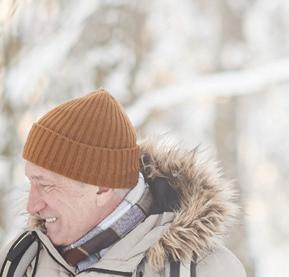
 Dear Savvy Senior,
Dear Savvy Senior,
What steps need to be taken after a loved one dies? My 71-year-old uncle, who’s divorced with no children, has terminal cancer. He’s asked me to take care of his affairs so I would like to find out what I need to do after he passes away.





I’m very sorry to hear about your uncle. The death of a loved one can bring about a host of different tasks and responsibilities. Here’s a list of some things you can do now, and after his death, that can help keep a sad event from becoming even more difficult.







There are several tasks you can do now while your uncle is still living that will make things easier for you after he dies.
For starters, find out where he keeps all his important papers like his trust or will (also make sure it’s updated), birth certificate, Social Security information, life-insurance policies, military discharge papers, financial documents, key or combination to a safe deposit box or a home safe. Also make a list of his digital assets (including usernames and passwords) like his email account, online banking accounts, social media accounts, etc.

If your uncle doesn’t have an advanced directive, help him make one (see CaringInfo.org for free state-specific forms and instructions). An advanced directive includes a living will that specifies his end-oflife medical treatments and appoints a health-care proxy to make medical decisions if he becomes incapacitated. In addition, you should also make a do-not-resuscitate (DNR) order. Your uncle’s doctor can help you with this.
You should also pre-arrange his funeral, memorial service and burial or cremation.
Once your uncle dies, you’ll need to get a legal pronouncement of death. If no doctor is present, you’ll need to contact someone to do this.
If he dies at home under hospice care, call the hospice nurse, who can declare his death and help facilitate the transport of the body.
If he dies at home without hospice care, call your uncle’s doctor. You’ll then need to call the funeral home, mortuary or crematorium to pick up the body. If your uncle is an
organ or tissue donor, contact the funeral home or the county coroner immediately.

If funeral plans were not pre-arranged, you’ll need to make arrangements and prepare an obituary. If your uncle was in the military or belonged to a fraternal or religious group, you should contact those organizations too, because they may have burial benefits or conduct funeral services.
You should also notify family members, close friends and his employer if he was still working, and make sure his home is secured.
To wind down your uncle’s financial affairs, you’ll need to get multiple copies of his death certificate, which are typically ordered by the funeral home.
If you’re the executor of your uncle’s estate, take his will to the appropriate county or city office to have it accepted for probate. And open a bank account for your uncle’s estate to pay bills, including taxes, funeral costs, etc.
You also need to contact your uncle’s estate attorney if he has one; tax preparer to see if estate or final income taxes should be filed; financial adviser for information on financial holdings; life insurance agent to get claim forms; his bank to locate and close accounts; and Social Security, the VA (if he’s a veteran) and other agencies that provided benefits in order to stop payments.




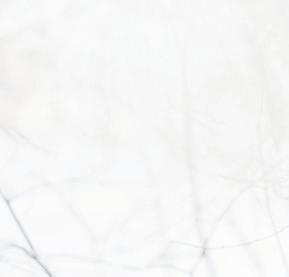

You should also cancel his credit cards, delete or memorialize his social media accounts and, if relevant, stop household services like utilities, mail, etc. His home and personal belonging will also need to be dealt with in the coming weeks.
Send your senior questions to: Savvy Senior, P.O. Box 5443, Norman, OK 73070, or visit SavvySenior. org. Jim Miller is a contributor to the NBC Today show and author of “The Savvy Senior” book.
 By Rebecca Conklin, D.O.
By Rebecca Conklin, D.O.
Nearly 40% of adults over 65 use five or more prescription medications, according to the Journal of the American Medical Association (JAMA).
So how can people be sure they’re genuinely being helped — and not harmed — when taking so many prescriptions?
Proper prescribing should maximize treatment effectiveness, minimize the risk of side effects and drug interactions, reduce costs and respect the patient’s choices.
Overprescribing is most common in the elderly. As people develop new health issues, see multiple physicians or introduce over-the-counter medicines, the chance of overprescribing increases.
Every added medication can lead to more side effects, more interactions with other medicines, and potentially more emergency room visits.
Taking a lot of pills every day can be overwhelming and increasingly expensive. Managing this “pill burden” can also be very time consuming and can take away from things seniors truly want to be doing, such as spending time with loved ones or participating in activities they enjoy.
Deprescribing helps patients back off medications when doses are too high or stop them entirely if they are no longer required.
The process of eliminating medications from your daily regimen should be planned and supervised by your doctor. Self-advocacy is essential to its success.
Geriatricians at St. Ann’s Community recommend reviewing and updating all your medications with your primary care physician during every office visit. Be sure to include prescriptions, over-the-counter medications and supplements to help your doctor troubleshoot potential problems and address your concerns.
It can be helpful to bring a family member or friend with you when you go to the doctor’s office. He or she can help you remember what the doctor says or take notes for you. You should try to keep a copy of your medication list with you at all times in case of an emergency.
For every medication on your list, ask your doctor:
• Why am I taking this medication?
• What are the potential benefits and potentially harmful side effects?
• Will it interact with my other medications?
• Can it affect my memory?
• Can it cause me to fall?
• How long will I need to take it?
Financial education helps people learn about savings, credit and loans. It also helps prepare people for life changes and weather the unexpected. Financial knowledge is essential when planning for retirement.
So, how prepared are adults in the United States for their retirement? The National Endowment for Financial Education (NEFE) conducts polls on key issues, like retirement savings, that affect a person’s financial past, present, and future.
Here’s what we have learned over the past year:
• In a poll about financial education mandates, 80% of adults said they wish they were required to complete a semester- or year-long course focused on personal finance education during high school. Also, 88% think their state should require a semester- or year-long course for high school graduation.
• In that same poll, 84% of those approaching retirement age said “spending and budgeting” should be taught in schools.
Be aware that as your body ages, it becomes less capable of removing waste efficiently, so medicines can take a longer time to be cleared from the body. Due to this, medicines have the potential to accumulate within the body and cause more side effects. As people age, doses may need to be reduced or certain medications may need to be stopped altogether to account for this.

Medications that can increase the risk of falls, worsen cognitive impairment or lower blood sugar top the list of which ones to stop.
Eliminating preventive medicines like aspirin, cholesterol medicines, vitamins and supplements may also be appropriate for some individuals.
Certain medicines require you to slowly decrease the dose, whereas others you can stop right away. You should work with your doctor to develop a plan for you detailing how to stop a medication safely.
So before you decide to pop another pill, ask your doctor if taking it is really in your best interest. Your pharmacist can also help answer any questions, especially regarding side effects and drug interactions.
Receiving the best medicine for what ails you should leave you feeling better, so you have the time, resources, and energy to enjoy life to its fullest.
Rebecca Conklin, DO (Doctor of Osteopathic Medicine) is a geriatric physician at St. Ann’s Community and Pillar Medical Associates in Rochester. Contact her at rconklin@mystanns. com or visit www. pillarmedical.com.
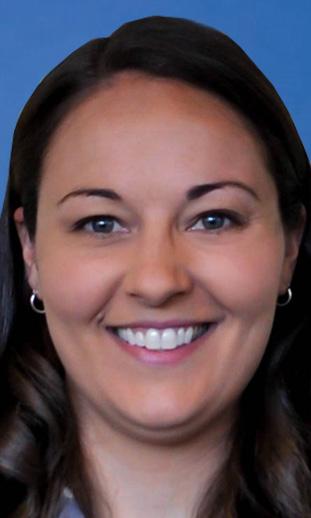
• In a financial well-being poll conducted during the COVID-19 pandemic, 85% of respondents confirmed that some aspect of their personal finances was causing them stress. For 31% of respondents, that concern was “having enough saved for retirement.”
• In that same poll, 70% said they made financial adjustments due to the COVID-19 pandemic. Of that group, 27% increased contributions to their emergency savings, retirement savings, or other savings or investments. In comparison, 21% tapped into emergency savings—or borrowed against retirement savings.
Q.: My spouse doesn't have enough work credits to qualify for Social Security retirement benefits. Can they qualify on my record?
A.: A spouse receives one-half of the retired worker's full benefit unless the spouse begins collecting benefits before full retirement age. If the spouse begins collecting benefits before full retirement age, the amount of the spouse's benefit is reduced by a percentage based on the number of months before he or she reaches full retirement age. You can learn more by reading our online publication, Retirement Benefits, at www.ssa.gov/pubs.
Q.: Is it true that a person can own a home and still be eligible for Supplemental Security Income (SSI) benefits?
A.: Yes. A person who owns a home and lives in that home can be eligible for SSI benefits. Although there is an asset limit for people to qualify for SSI, some things don’t count toward that limit, such as a house, a vehicle, and some funds set aside for burial expenses. To learn more about SSI and the eligibility requirements, browse our booklet, "Supplemental Security Income (SSI)" at www.ssa.gov/pubs/11000.html.
Lifetime financial education can be a helpful tool in preparing for retirement. This includes understanding Social Security retirement benefits and making the most of retirement income. You can learn more on our retirement page at www.ssa. gov/retirement.
A personal my Social Security account should be a part of your financial plan. With a secure my Social Security account, you can verify your earnings history, get personalized retirement benefit estimates, and more. If you don’t have an account, you can easily create one at www.ssa.gov/ myaccount.
To learn more about NEFE’s mission, visit their website at www.nefe. org. Please share this information with friends and family.
Q.: I am expecting a child and will be out of work for six months. Can I qualify for short-term disability?
A.: No. Social Security pays only for total disability — conditions that render you unable to work and are expected to last for at least a year or end in death. No benefits are payable for partial disability or short-term disability, including benefits while on maternity leave.
Q.: I have been getting Social Security disability benefits for many years. I’m about to hit my full retirement age. What will happen to my disability benefits?
A.: When you reach full retirement age, we will switch you from disability to retirement benefits. But you won’t even notice the change because your benefit amount will stay the same. It’s just that when you reach retirement age, we consider you to be a retiree and not a disability beneficiary. To learn more, visit www.ssa.gov.

Frank chose non-surgical CyberKnife® at HOA –offering 5 treatments instead of 35!
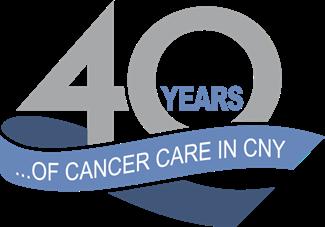
“The original diagnosis was to treat my prostate cancer with seven weeks of radiation, five days a week. I was kind of upset that I was never given the option of CyberKnife,” said Frank. “The precise radiation achieved by CyberKnife, far fewer treatments, and the personalized care I received from Dr. Chin and his team made my decision an easy one. Better, the treatment was a real success!”
To hear more of Frank’s story and learn if CyberKnife is right for you, visit hoacny.com

As one of the most important people on earth, you should have nothing to worry about but choosing today’s activity, outing or dining option. Or just enjoying quiet time in beautifully maintained surroundings with 24-hour security.
St. Ann’s Community at Chapel Oaks has no entrance fee, only a low, monthly service fee for all your amenities. You also have complimentary transportation for appointments and activities, and access to higher levels of care if you ever need it.
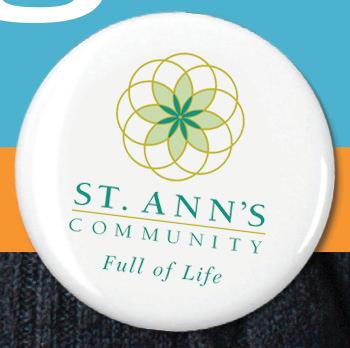
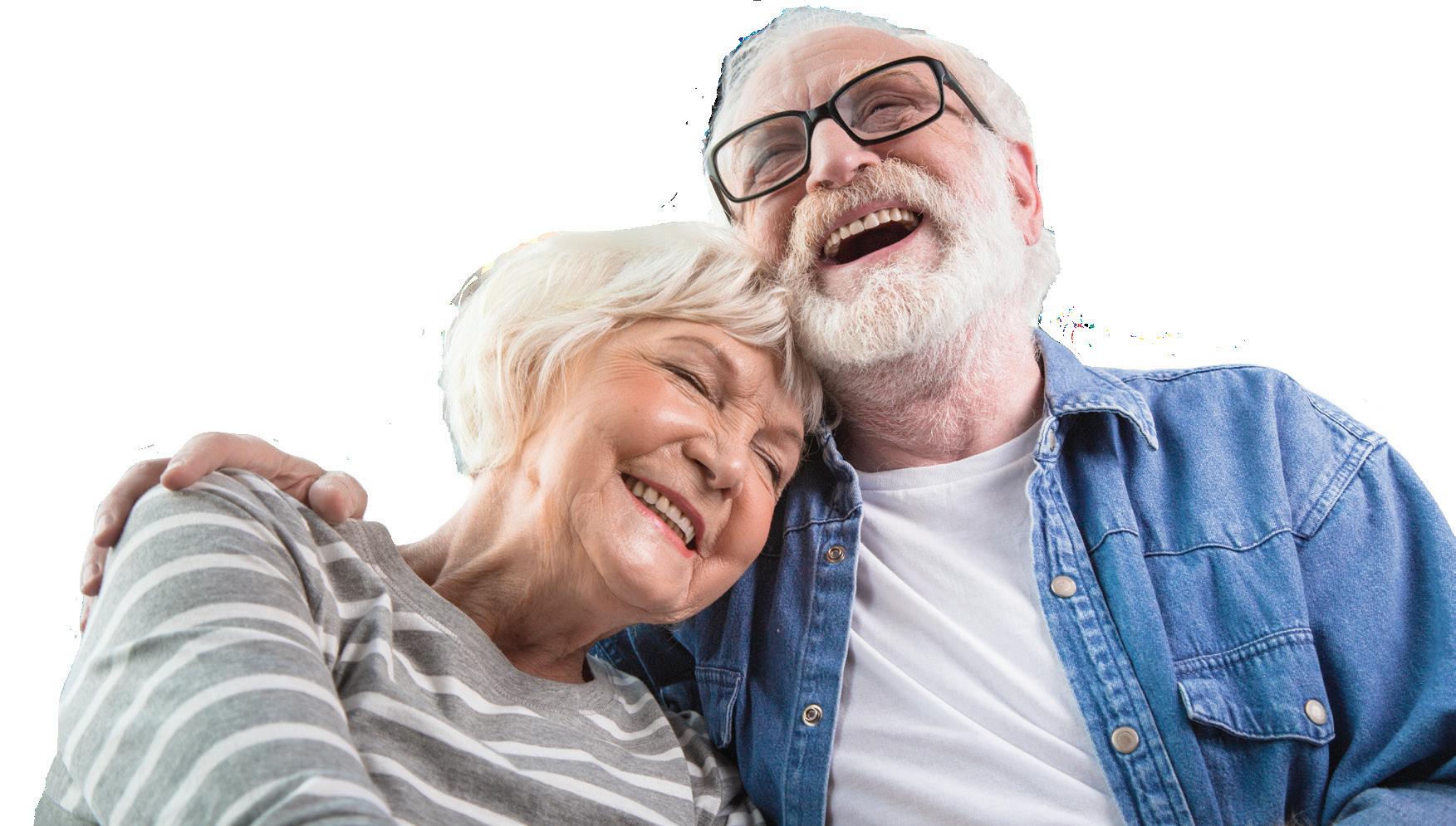

Excellus BlueCross BlueShield has appointed three new members to its senior leadership team. They will take on new roles as part of the health plan’s population health engagement leadership team working to ensure equitable access to high-quality, affordable care.
They are:
• Pharmacist Mona Chitre has
been named president of pharmacy solutions, in addition to her role as chief pharmacy officer. In her expanded role, Chitre will focus on delivering clinically sound pharmacy solutions to enable growth and diversification and bolster investments and innovation in all areas of the rapidly changing pharmacy landscape. She joined the health plan in 2000.
Chitre oversees Excellus BCBS’s pharmacy program, focusing on ways to drive affordable drug costs, quality outcomes, and appropriateness of care for the health plan’s 1.5 million Upstate New York members.


Under Chitre’s leadership, the health plan’s pharmacy program has developed numerous programs to improve the health and well-being of the communities it serves. The introduction of the innovative RxConcierge savings outreach program and initiatives focusing on generic medications, medication adherence, and specialty medications have helped members access quality, affordable medications and earned the health plan national recognition. During her tenure, the health plan’s Medicare Part D prescription drug plan has received a five-star rating from the Centers for Medicare and Medicaid Services, its highest rating, for seven consecutive years, making it the longest leading, and one of only two five-star plans in the nation.
• Physician Lisa Harris has been
appointed senior vice president and corporate medical director for Excellus BCBS. In her new role as SVP corporate medical director, she will work closely with senior leaders to drive engagement, innovation, clinical quality, equitable access and affordability, as well as enable efficiency and satisfaction among the health plan’s provider partners. Harris joined the health plan in 2018.
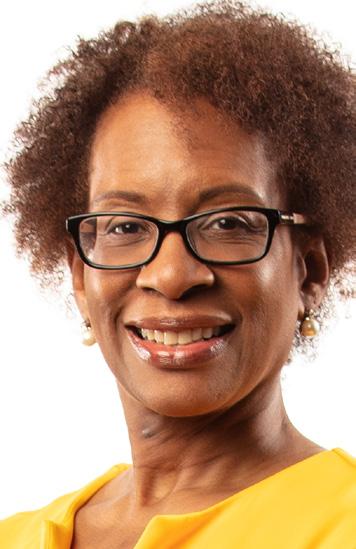
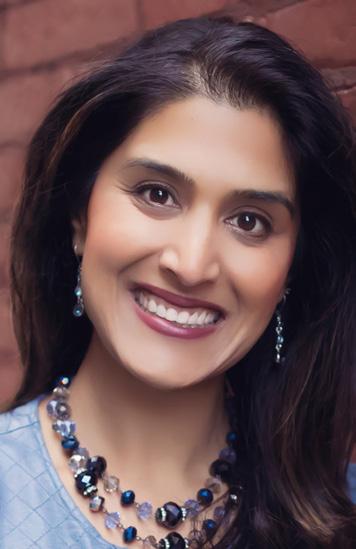
She previously served as vice president of medical affairs for commercial lines of business where she was closely aligned with the sales team serving as a clinical liaison and leading the clinical affordability strategy.
At Excellus BCBS, Harris main-
tained a focus on the larger strategy of improving health care for all as she collaborated on innovative solutions including a clinical queries system allowing key stakeholders to receive a coordinated response to clinical questions within 24 hours. She worked to develop a multifunctional high-cost claimants team designed to engage case managers earlier on in the member experience.
• Tony Vitagliano has been
named senior vice president, provider network engagement. In his new role, Vitagliano will continue to focus on the health plan’s provider partnership strategy in addition to now leading the areas of payment integrity, medical policy and risk adjustment. He will also serve as a member of the health plan’s executive team. Vitagliano joined the health plan in 1993.
Vitagliano began his career with the health plan as an actuarial analyst and has held several positions during his time with the organization. Most recently, he served as vice president, provider network management and operations, leading teams dedicated to provider contracting, provider relations, value-based payments, and reimbursement.
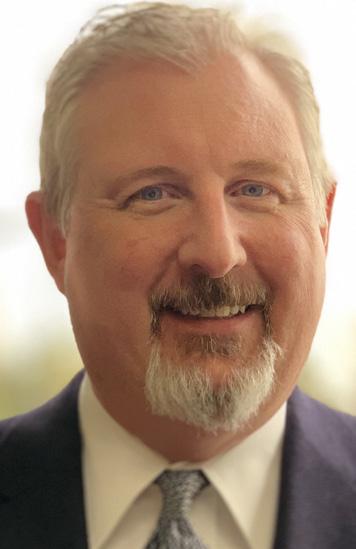
During his career, Vitagliano led the development of Excellus BCBS’s accountable cost and quality agreement (ACQA) model, providers partnership strategy, and the alignment of clinical quality and efficiency.
“Through their partnership with our providers and community members, each of these leaders has made a significant impact in achieving our health plan’s mission of ensuring equitable access to affordable, high-quality care,” said Jim Reed, Excellus BCBS president and CEO. “I’m excited to see our efforts in the area of population health engagement continue to grow under the strategic leadership of these highly skilled and experienced individuals.”
WellNow Urgent Care, one of the country’s fastest-growing urgent care providers, has opened its newest center in Rochester in January.
Located at 235 Winton Road N., the new facility offers treatment for non-life-threatening injuries and illnesses, COVID-19 testing and treatment, and occupational medicine services seven days a week from 8 a.m. to 8 p.m. Patients can simply walk in or, if preferred, schedule a visit online.
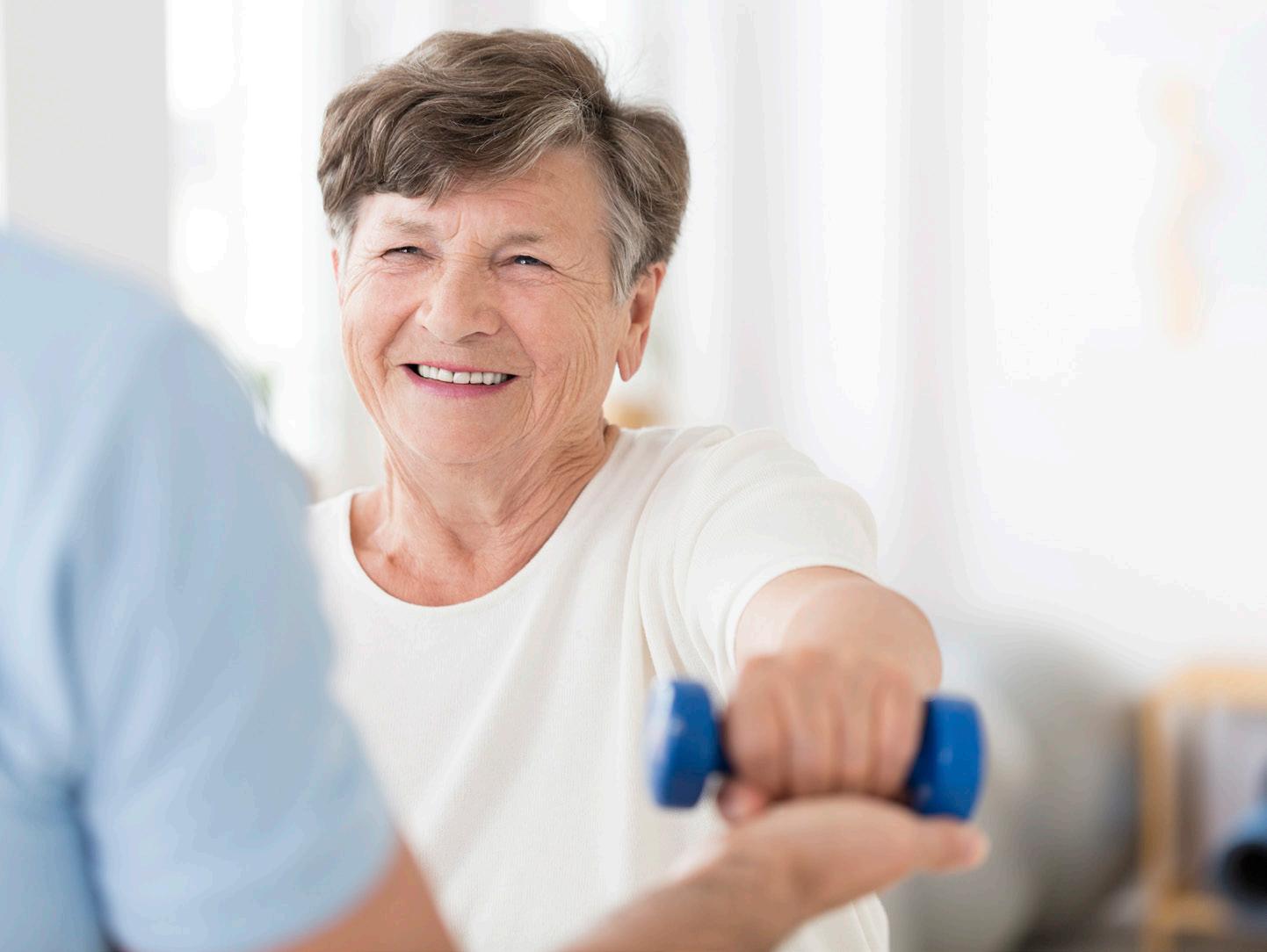
“Injuries and illnesses show up at the most inconvenient times, including evenings and weekends,” said physician John Radford, president at WellNow Urgent Care. “Whether you suspect you have COVID-19 or the flu, or you have an injury that can’t wait, we’re proud to be a trusted destination to provide the care that patients need, when they need it, rather than sitting for hours in an

emergency room or delaying care.”
Urgent care centers are an increasingly important part of the U.S. healthcare marketplace, providing patients with much-needed access to quality care with shorter wait times and lower costs than the traditional emergency room.
According to the company, the new center in Rochester will provide timely treatment for ailments such as sprains, burns, lacerations, colds, flu and allergies, as well as on-site X-rays, lab testing and physicals. Occupational medicine services, including Workers’ Compensation assistance, pre-employment physicals, drug and alcohol testing and more are also available on a walk-in basis.
HCR Cares will partner with



more than 125 Rochester-area predominantly African American churches to help older adults in their congregations overcome barriers to using home health care services to improve their health outcomes. Through new grant funding, HCR Cares will expand its diverse care project to build and manage relationships with religious leaders and churches. The project is designed to help African American residents over age 65 overcome barriers that have kept them from receiving home health care tailored to their individual needs. This will involve increasing connections to physicians to improve trust in the health care system, making health care information more readily available and helping to address beliefs that may delay early medical intervention.
Funding for this project was provided by Greater Rochester Health Foundation, whose mission is to pursue and invest in solutions that build a healthier region where all people can thrive, and from The Max and Marian Farash Charitable Foundation.
Project implementation, which started in January, follows completion of a demonstration project with African American pastors and congregations to increase awareness of home care programs and services. HCR Cares, HCR home care and Strategic Community Intervention LLC launched the demonstration project. A field coordinator will provide a point of contact to manage and nurture relationships with the African American churches, and will
work with HCR staff, the diverse care team and project oversight committee to achieve project goals.
“Based on the more than 40-year experience of HCR Cares and HCR Home Care, and on our demonstration project over the past year, we know there is a great need for our diverse care project,” said Louise Woerner, president and volunteer executive director, HCR Cares. “We are grateful for the generous support from the Greater Rochester Health Foundation and The Max and Marian Farash Charitable Foundation to help increase older African Americans’ access to home care, which plays a critical role in improving recovery from hospitalization and in reducing the risk of rehospitalization.”

A UR Medicine Thompson Health interdisciplinary team was recently selected by the health system as its 2022 Do It Group (DIG) of the Year for implementing several initiatives to improve patients’ sleep.
Co-chaired by ICU Lead Advanced Practice Provider Anne Finch and ICU-Observation Unit-Diagnostic Imaging Nursing Director Mary Kate Corey, the sleep hygiene guidelines DIG set out to promote healing and wellness as well as improve patient satisfaction by ensuring a minimum of four hours of uninterrupted sleep for patients.
The group’s approach included reducing the taking of vital signs overnight, delaying morning lab draws, avoiding overnight medication passes whenever possible, promoting a wakeful daytime environment and providing patients with items including ear plugs and eye masks. In addition, Thompson created formal guidelines within the hospital’s policy system and cues within its electronic health record system prompting staff to incorporate the guidelines in care. They also provided education to the staff, distributed information sheets to patients, and displayed materials promoting the guidelines.
The DIG conducted patient surveys to gauge the effectiveness of its efforts. Survey results showed improvements in a number of areas, including the time it takes patients to fall asleep, how deeply they are sleeping, and their ability to fall back asleep if awakened.
Joining Finch and Corey on the DIG were eight other Thompson associates: Stephanie Friel, James Hart, Laurie Malotte, Bridget Osterhout, Erica Iversen, Mary Freeman, Shelby Valenti and Jill Wilson.

The group will be formally honored in May during the health system’s Shining Star Awards Ceremony.


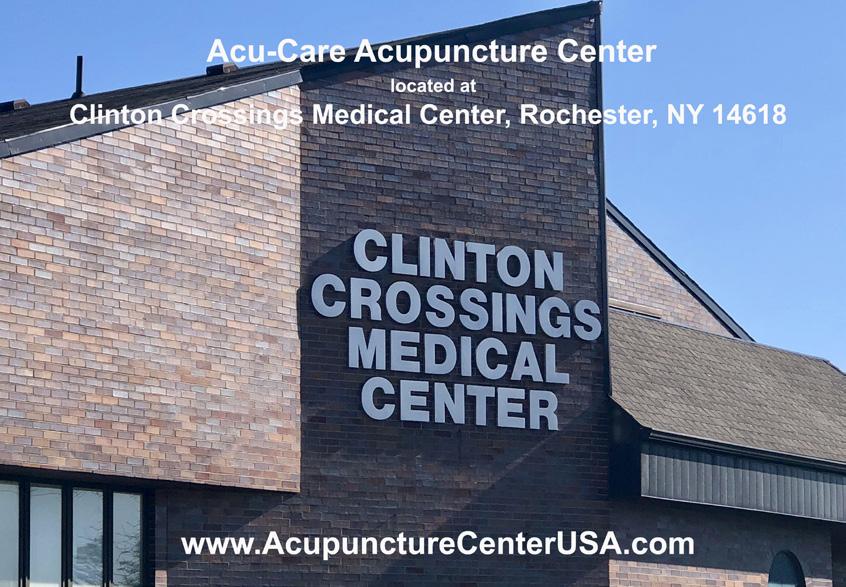
THE TIME AND PLACE FOR A
Prepare for new opportunities that stimulate engagement, feed your curiosity, and inspire a fresh desire for learning. St. John’s full array of service options address evolving needs within compassionate community settings.
• Independent Senior Living
• Enhanced Assisted Living
• Respite Care
• Rehabilitation
• Skilled Nursing Care
• Dementia Resource Center
• Hospice Care
Many life-enhancing choices await you.
SCHEDULE A TOUR TODAY. 585-760-1300 | stjohnsliving.org
• On the Cover — Michael Speranza:, a chef, musician, is living the dream(s)

• Resolutions — Area financial experts offer a few suggestions for the new year

• Scams — ‘Hey grandma, I need help’ and other top scams
• Love— 13 gestures that’ll make him fall in love—all over again
• Museum — How one Coca-Cola pitcher grew into a cute museum in the middle of nowhere
• Health — Dr. Michael Roizen: living healthfully into our 100s is in our grasp
• Exercise — Tai chi and this personal trainer can help you succeed inside and out ...and so much more!
